|
Me Sahyadri |
|
June2018 |
|
Volume 5, number 11, # 65 |
|
Mysteries of Maval Caves – Devghar Caves |
Please use minimum 1280 pixel horizontal screen resolution for viewing. Please be patient while all the images in webpage are loaded. Please do not use the images for any commercial use without permission. Text in Marathi and English is not exact translation. Please give sufficient time to allow the photographs to load. Special thanks to Mayur Tikone, Devgharand all those who helped me during the compilation and for the help and guidance during the activity. |
|
|
|
|
देशाची आर्थिक प्रगती व्हावी असे सर्व नागरिकांना वाटणे सहाजिक आहे. अर्थकारणामुळे मिळणारा रोजगार, समृद्धी यासाठी सर्वांनाच आर्थिक प्रगती हवी हवीशी वाटते. आर्थिक प्रगती होताना, त्याचा दिर्घकाळात समाजावर, निसर्गावर, वातावरणावर दुष्परिणाम होणार नाही याची काळजी घेणे महत्वाचे आहे. मनुष्याच्या भावी पिढ्यांना पाणी, शुद्ध हवा, योग्य वातावरण मिळत रहावे अशी भावना मनात रुजणे महत्वाचे आहे. वाढत्या आर्थिक प्रगतीमुळे नैसर्गिक संपदेवर ताण येतो. प्रगतीसाठी प्रदुषण होते. जंगले, माळराने, व इतर अधिवास नष्ट होतात. वसुंधरेवर रहाणाऱ्या इतर जीवांचा मात्र मनुष्य फारसा विचार करत नाही. आर्थिक प्रगती करताना, मनुष्य निसर्गाची हानी करत आहे. मुळताच माणसाला निसर्गाचे महत्व समजणे हे सध्याच्या आपल्या प्रगत जीवनशैली मुळे अवघड झाले आहे. आर्थिक प्रगती, समाजाची प्रगती व निसर्ग संपदेची निगा, यांचा समतोल राखणे काळाची गरज आहे.
सह्याद्री (पश्चिम घाट) हा एक नैसर्गिक संपदेचा, वैविध्यतेचा, भौगोलिक व ऐतिहासिक ठेवा आहे. वाढत्या मानवी अतिक्रमणाचा, सह्याद्रीच्या विविध घटकांवर होणारा दुष्परिणाम भविष्यात आपल्यालाच धोका निर्माण करेल, यात शंका नाही. शुद्ध पाणी, हवा व उर्जा, भावी पिढीला मिळण्यासाठी, नंद्यांचे उगम असलेला सह्याद्री व त्याभागातील जंगले टिकवणे महत्वाचे आहे. सह्याद्रीच्या महत्वाच्या घटकांचे महत्व छायाचित्रांद्वारे प्रकट करण्याचा मी येथे प्रयत्न केला आहे. येथील पक्षी, प्राणी, वनस्पती, अधिवास, किल्ले व लेणी अशा विविध विषयांबद्दल आपण समजुन घेऊ.
|
|
As the economic development has taken the center stage, the balance between the environmental sustenance and socio economic development will be under the scanner. As most experts with balanced views have proclaimed, Indian wildlife and ecological system sustenance will be under threat, unless precautions are taken with the help of appropriate research and long term national interests. As we encounter the economic development, many habitats which indirectly or directly help sustainable development will be damaged. The awareness to gauge the success by sustainable development and not by year to year growth is a distant dream any environmentalist will assume in current scenario.
Western ghats, or Sahyadri as we all call it as, is a treasure trove of spectacular landscapes, biodiversity, flora, fauna, some amazing geological wonders and man made monuments. With the increasing pressure from human encroachment, all these elements are under stress and in turn are under depletion. Western ghats should be left untouched by human beings, to protect their future generations from getting short of resources, such as water, energy and clean air. The important elements of western ghats, which need protection are highlighted in the new version of Photo journal, Me Sahyadri Magazine.
|
|
|
| |
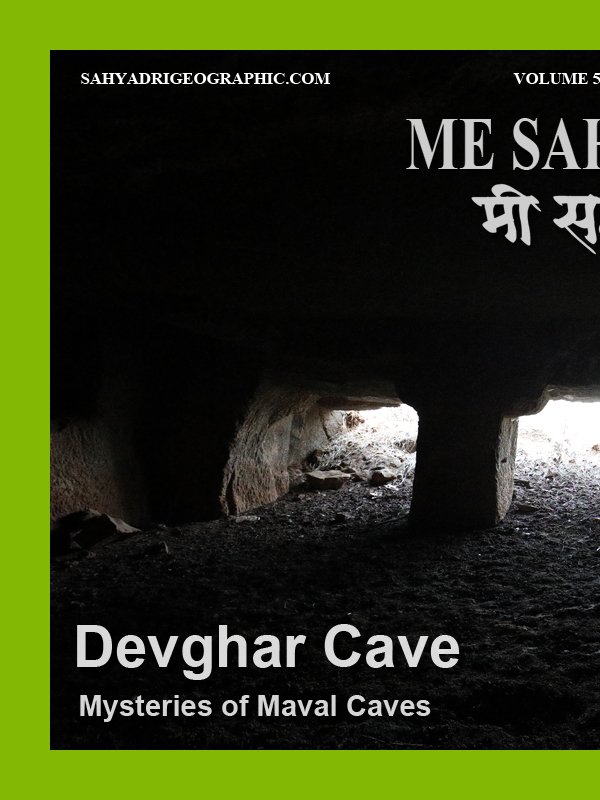 
|
| |
| Me Sahyadri – June 2018 A
|
| |
|
|
मावळ लेणी मोहेमेचा सारांश :
मावळातील भाजे, बेडसे आणि कार्ले लेणी अप्रतिम आहेत. त्यामुळे या भागातील इतर लहान लेण्यांकडे फारसे कोणी फिरकत नाही. आम्ही चार समविचारी मित्रांनी मात्र या हरवलेल्या लेण्यांची शोधाशोध करण्याचे ठरवले. साईप्रकाश बेलसरे, निनाद बारटक्के, अमेय जोशी आणि विवेक काळे असा संघ तयार झाला. एकोणीसाव्या शतकात जेम्स बर्जेस आणि जेम्स फर्ग्युसन या दोन इंग्रज विद्वानांनी भारतातील लेणी धुंडाळली. त्यांनी १८८० साली "केव्ह टेम्पल्स ऑफ इंडिया" या पुस्तकाचे प्रकाशन केले. या पुस्तकात मावळातील लहान लेण्यांचा फारसा तपशिल नसला तरी, या मावळातील इतर लहान लेण्यांबद्दल ५-६ वाक्यांमध्ये आम्हाला त्रोटक का होईना माहिती मिळाली. त्यांनी उल्लेख केलेली, काही ठिकाण सापडली, तर काही ठिकाण काहीही केल्या सापडेनात. कदाचित न सापडलेली ठिकाण नष्ट झाली असावीत. पण मोहिमे दरम्यान नविन, ज्या ठिकाणांचा पुस्तकात उल्लेख नव्हता, पण ग्रामीण भागातल्या स्थानिकांना माहिती होती अशी ठिकाण सापडली.
जेम्स बर्जेस आणि जेम्स फर्ग्युसन या दोन इंग्रज विद्वानांनी लिहिलेल्या प्रत्येक शब्दाचा धागा म्हणुन वापर करायचे ठरले. कामांचे वाटप झाले.
शोध मोहिमेत लागणाऱ्या खाऊची सोय करणे, विषय आणि ठिकाणाचा आधी अभ्यास करणे, प्रवासाची सोय करणे, गावकऱ्यांकडे लेण्यांबद्दल चौकश्या करणे, मोहिमे दरम्यान गचपणातुन वाट शोधणे, लेण्याच्या अवशेषांची मोजमाप घेऊन त्याची चित्रे/नकाशे काढणे, छायाचित्रे काढणे, जि. पि. एस. यंत्रावर वाटेबद्दल माहिती नोंदवणे, लेण्यात लहान बारकावे शोधणे, लेण्यांचे विश्लेषण करणे, नोंदी करणे, अशी वेगवेगळ्या प्रकारची काम वाटुन घेण्यात आली.
प्रत्येक ठिकाणी जाताना, घरचा अभ्यास करावा लागला. जुनी पुस्तके, नकाशे धुंडाळले गेले. गावातल्या मित्रांची मदत झाली. गावागावात चौकश्या केल्या. गडद, लेणे, गुहा, कपार, भोगदा, विहार, पांडवांनी एका रात्री बनवलेली गुहा असे अनेक शब्द वापरुन चौकश्या झाल्या. बहुतेक वेळा असे काही नाही इथे ! तुम्ही कुठुन आलात ? असे उत्तर मिळाले. लेणे आहे का इथे कुठे असा प्रश्न विचारला तर आम्हाला बहुतेकांनी कार्ले/बेडसे/भाजे लेण्यांचा पत्ता दिला. पण बकऱ्या, गाई घेऊन डोंगरात फिरणारे गुराखी मात्र दरवेळेला मदतीला धाउन आले. वाटांचे आणि दिशांचे अंदाज मिळाले. जुजबी माहिती घेऊन ठिकाण शोधणे या प्रकाराचा चांगला सराव झाला. कधी काटेरी करवंदींच्या खालुन खुप सरपटाव लागल तर कधी घसाऱ्यावर हात टेकावे लागले.
लेण्यांमध्ये मोठे कोळी (स्पायडर), कातळ पाली, वटवाघळ, मधमाश्या, पाकोळ्या, घुबडं भेटले. आमच्या मुळे त्यांना उगाच त्रास झाला, असा अपराधीपणा वाटला. प्रत्येक शोधमोहिमेला यश आलेच असे नाही. काही ठिकाण सापडली नाहीत. तर काही ठिकाण आमच्याच मनाचे खेळ आहेत असे लक्षात आले. बहुतांश ठिकाणी कोणत्या ना कोणत्या प्रकारची जोखिम होती. वटवाघळ, लेण्यातील धुळ, काळोख, मधमाश्या, काटेरी वनस्पती, घसारा, गुहेतील ऑक्सिजन चा अभावआणि इतर न दिसणारे धोके यावर मात झाली. मोहिमेसाठी, विजेऱ्या, जि. पि. एस., मोजपट्या, दोऱ्या, लेजर यंत्र, नकाशे, गुगल मॅप, जाळीच्या टोप्या या सर्व जंत्रीचा उपयोग झाला. एकूण मिळुन २० नविन अपरिचित ठिकाण/वास्तु पहायला मिळाल्या, मावळाचा भुगोल जरा अजुन नीट लक्षात आला. नविन प्रश्न पडले आणि नविन कोडी सोडवयाला मिळाली. तर्क वितर्क झाले.
|
|
About the Maval Cave exploration :
The main caves in Maval region are so significant that other small hermit caves are often overlooked. We as a team of four like minded friends, decided to explore the Maval region for these small hermit caves. We explored and found few beautiful places. The very concept of creating a hermit cave somewhere high up in the hills is fascinating. These places often are full of tranquility and nothing else. With very little architectural evidences and clues, the academicians have obviously ignored these places. It was James Fergusson and James Burgess, during their exhaustive study of “Cave temples of India, 1880” mentioned few of these hermits in Maval region of Pune district. With the little clues and exhaustive investigation, team of four members, Saprakash Belsare, Amey Joshi, Ninad Bartakke and Vivek Kale started the exploration. The journey to locate, trek and analyse these hermit caves itself was fascinating. We met many villagers who were unaware of these places, but also met few shephards who were precisely aware of the hermits and gave us tentaive guidance.
There is a very brief mention about the misceleneous caves of Maval by James Fergusson and James Burgess in their work. Based on available information we decided to search these caves and monuments. The activities were planned. The food, travel , track exploration in difficult and routes full of foliage, enquiring the villagers about the caves, taking measurements and drawing skecthes and maps, photography, GPS data collection, making notes and analysing the information, observing the minor details of the caves etc activites were distributed amongst the team members. We met many bats, owls, geckos, lizards, large spiders, martins, honeybees during the treks. Often we felt sad that we disturbed them to see the caves. Most of these places are hazardous due to pitch darkness, bats, dust, thorny plants, honeybees, low oxygen level in caves and rock patches etc. Not all the attemps were successful. Sometimes we could not find the intended places and sometimes we realised that the cave was just our imagination and did not exist. Nevertheless we saw about 20 new strange caves/monuments during the exploration. The high intensity torches, GPS tool, measuring tapes and measuring laser tool, Honeybee protection caps, maps, google maps, photographs etc were useful during the mission.
On this photoessay, I have compiled the information and photographs of Devghar Caves in Maval, amazing, simple but questions-thrower cave.
|
|
|
| |
  |
| The banner has been published here to improve the awareness of the trekkers and tourists visiting the various mountain forts, mountains in north western ghats. Please avoid accidents, by following good outdoor ethics such as no swimming in cisterns at mountain forts, no rock climbing without proper technical equipment and expertise. Please do not adventure, trek with any group or individually without understanding the risks associated. The frequency of the solo trekker fatalities have increased recently. Please strictly avoid solo treks. Please also avoid treks to mountains in large commercial groups, as it leads to damage to biodiversity of these high elevation ecological islands. Please respect the wildlife and biodiversity of the region. This has become more important as the ever increasing human interference is leading to severe damage to fragile ecosystems. Please be aware of the wildlife and biodiversity of the mountains before visiting these mountains. Please follow outdoor ethics. Follow ASI and Forest department rules. The concept of use of symbols for outdoor ethics was conceived and designed by "Sahyadri Trekker Bloggers Group". |
| |
|
|
| |
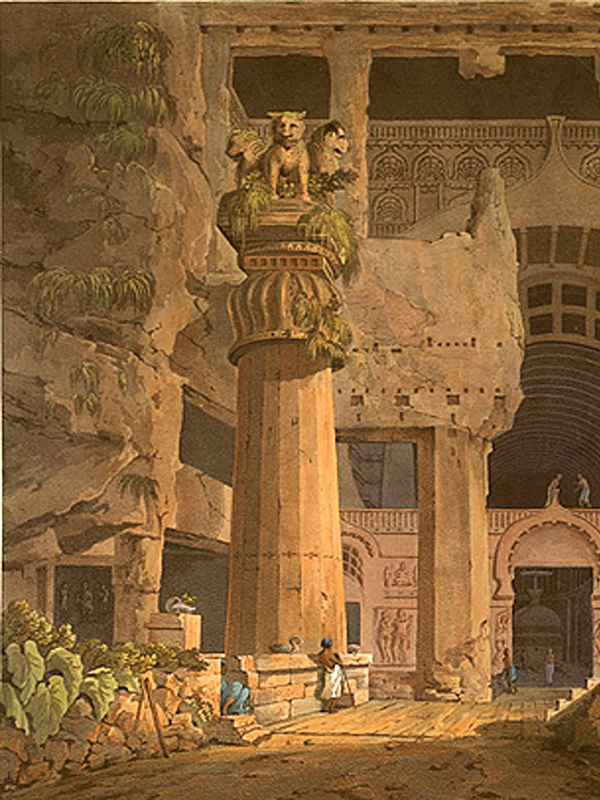 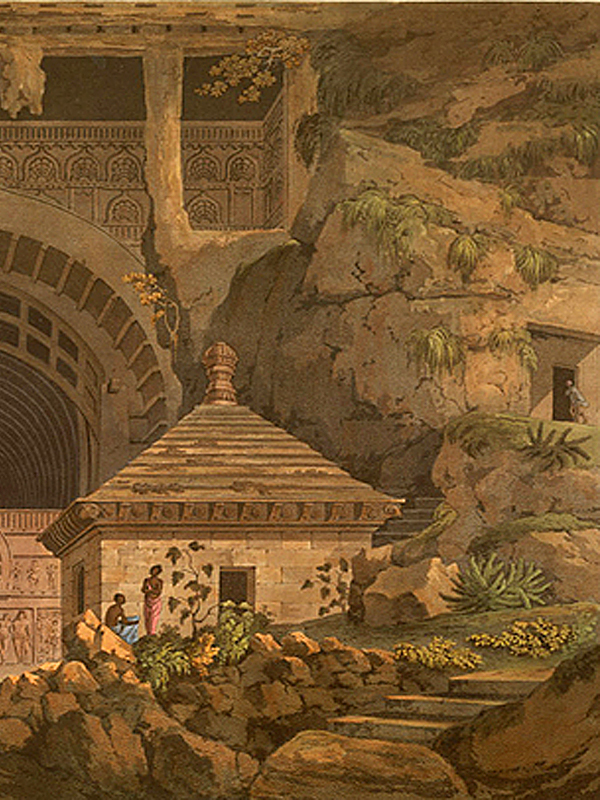 |
| |
| 1. Map of the region, Devghar cave, Maval Tehsil, Pune district, Maharashtra, India |
| |
|
|
महाराष्ट्र राज्यातील पुणे जिल्ह्याच्या मावळ तालुक्यात, देवघर एक गाव कार्ले डोंगररांगेच्या कुशीत वसलेले आहे. पश्चिम पुर्व पसरलेली कार्ले डोंगररांग पश्चिमेकडे सह्याद्रीच्या घाट माथ्यापासून पूर्वेकडे वाळख गावापर्यंत १३ किलोमीटर लांब पसरलेली आहे. या डोंगररांगेत कार्ले लेणी आहे. या डोंगरारांगेच्या दक्षिणेला एक समांतर डोंगररांग आहे. पश्चिमेकडे घाटमाथ्याजवळच्या कुरवंडे गावापासुन पूर्वेकडे शेलारवाडी पर्यंत पसरलेली ही विसापुर डोंगररांग अंदाजे ३५ किलोमीटर अंतरा पसरलेली आहे. विसापुर डोंगरारांगेत लोहगड, विसापुर किल्ले आणि भाजे, बेडसे, पाटण, शेलारवाडी लेणी आहेत.
|
|
Devghar is a village in Maval tehesil in Pune district in the state of Maharashtra in India. The village is located at the base of the one of the Sahyadri hill ranges on the Deccan plateau. Spread in west–east orientation, this Karle hill range, which is about 13 kilometer in length, from western ghat main ridge up to the Walakh towards east. This hill range has important archaeological site at Karle. This hill range is refered as Karle range in this photoessay. Further to south there is another parallel hill range spread from the Kurwande village at western ghat ridge, south of Lonavala up to the village Shelarwadi hills towards east. Visapur fort, Lohgad forts, Bhaje Caves and Bedse caves are located in this hill range. This hill range is refered as Visapur range in this photoessay.
|
|
|
| |
 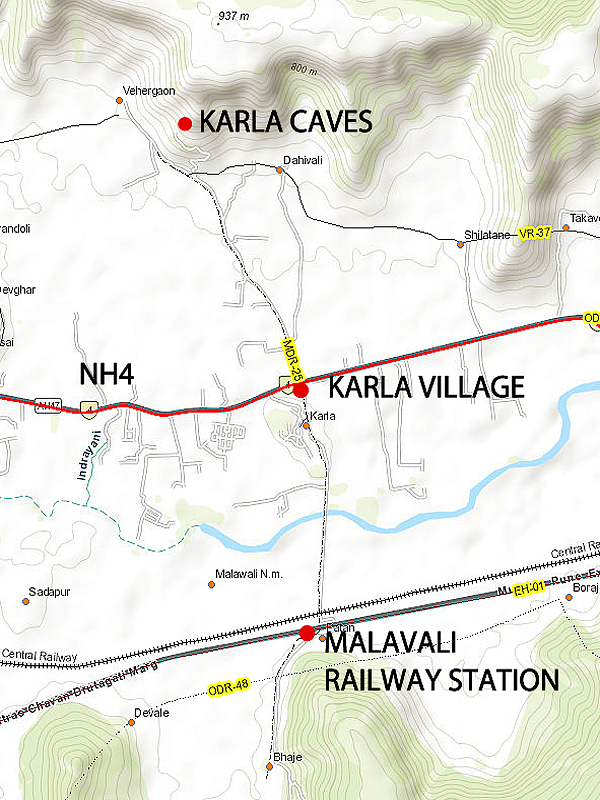 |
| |
| 2. Map of Devghar cave region, Maval Tehsil, Pune district, Maharashtra, India |
| |
|
|
कार्ले आणि विसापुर डोंगरारांगेच्या मधल्या पठारी इंद्रायणी नदी वाहते. इंद्रायणी नदीचा उगम लोणावळे भागातल्या डोंगराळ भागात होतो. इंद्रायणी पश्चिमेकडून पूर्वेकडे वाहते आणि पुढे भीमा नदीला जाऊन मिळते. कोकणात कल्याण आणि सोपारा येथे प्राचीन काळातीळ व्यापारी बंदरे आहेत. या बंदरांपासून घाटावरच्या मध्य महाराष्ट्रातील प्रमुख व्यापारी केंद्रांकडे (पैठण, तेर इत्यादी) जाणारा व्यापारी मार्ग बोर घाटातून घाटावर आल्यावर मावळातून इंद्रायणी नदीला समांतर होता. आज याच भागातुन मुंबई - पुणे राष्ट्रीय महामार्ग आणि मुंबई - पुणे मध्य रेल्वे मार्ग जातो. मुंबई - पुणे राष्ट्रीय महामार्गाच्या लगत वाकसई आणि देवघर ही दोन लहान गाव, कार्ले लेण्यांच्या दक्षिण पश्चिमेला वसलेली आहेत.
|
|
Between Karle range and Visapur range, Indrayani river flows from west to east, and the plateau is called as Indrayani basin in this note. Indrayani river originates in the hills around Lonavala. The ancient trade route climbs up the western ghat ridge from the Konkan over to the Deccan plateau at Lonavala. Once atop Deccan plateau at Lonavala, the trade route is aligned parallel to Indrayani river. This ancient trade route was to transport the goods from the eastern economic centres on the Deccan plateau to Kalyan and Sopara ports on the western coast of India. Today the modern Mumbai-Pune road and Central railway line passes through the same Indrayani river basin, was used for ancient trade in the past. The village Waksai and Devghar are located close to this trade route.
|
|
|
| |
 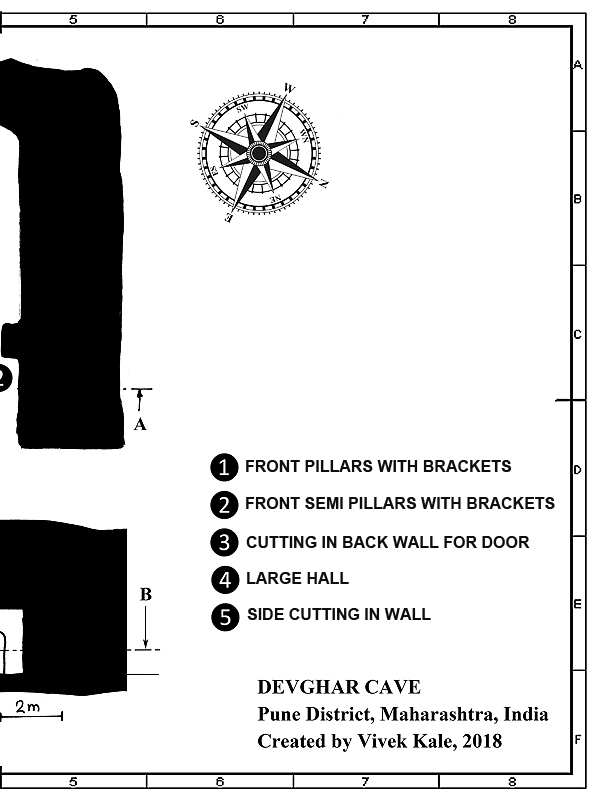 |
| |
| 3. Devghar cave map, Maval Tehsil, Pune district, Maharashtra, India |
| |
|
|
मुंबई - पुणे राष्ट्रीय महामार्गाच्या लगत वाकसई आणि देवघर ही दोन लहान गाव, कार्ले लेण्यांच्या दक्षिण पुर्वेला वसलेली आहेत. देवघर गाव लोणावळे पासून अंदाजे ७ किलोमीटर अंतरावर तर पुण्यापासून अंदाजे ६७ किलोमीटर अंतरावर आहे. देवघर आणि वाकसई या जुळ्या गावांच्या पंचक्रोशीत ५ महत्वाच्या प्राचीन वास्तु आहेत. देवघर गावाच्या पश्चिमेला डोंगरावर अंदाजे ५० मीटर उंचीवर जंगलात डोंगरकड्यात एक अर्धवट प्रशस्त लेणे आहे. गावातुन येथे येण्यासाठी वाट आहे. देवघर गावाच्या दक्षिण पुर्वेला वाकसई गावाजवळ एक लहान टेकडी आहे. टेकडी वर शंकराचे देऊळ आहे. या टेकडीच्या दक्षिणेला पायथ्याला दोन पुरातन पाण्याची टाकी आहेत. पाण्याची टाकी प्राचीन व्यापारी मार्गावर आहेत. जवळच एक अर्धवट काम केलेले टाके किंवा लेणे आहे. देवघर गावात एक जुने शंकराचे मंदिर आणि एक दगडात कोरून तयार केलेला मोठा जलाशय सुद्धा आहे.
|
|
Devghar village is located on the southern base of Karle hill range south west of Karle, close to the old Mumbai-Pune national highway (NH4). The village is located at about 7 kilometer from Lonavale town. It is located at about 67 kilometer from Pune city-centre. There are five interesting excavations at various locations around this village. The most prominent off these excavations is a cave located west, of the village in the scarp at about 50-60 meter above village level, and is easily accessible from the village by a hill trail.
Another set of prominent excavations are located on the south east of the village, around a small hillock. These excavations consist of two water cisterns and one incomplete rock cut work nearby. These water cisterns are very close to the highway and close to the ancient trade route.
|
|
|
| |
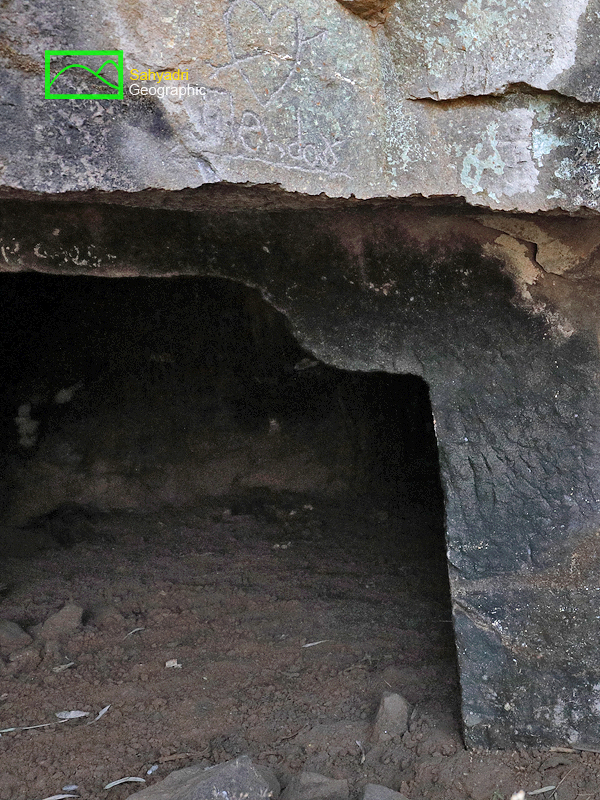 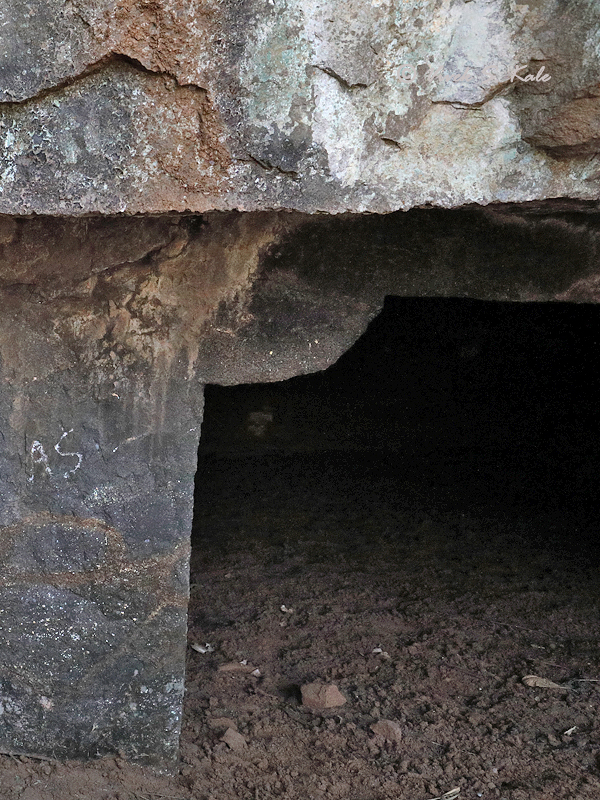 |
| |
| 4. Devghar Cave, Maval Tehsil, Pune district, Maharashtra, India |
| |
|
|
देवघर लेणे : देवघर गावाच्या पश्चिमेला डोंगरावर अंदाजे ५० मीटर उंचीवर जंगलात डोंगरकड्यात एक अर्धवट प्रशस्त लेणे आहे. गावातुन येथे येण्यासाठी वाट आहे. हे लेणे पाचव्या शतकानंतर चे असावे. या लेण्यात एक मोकळे सभागृह आहे. याचा आकार अंदाजे १० मीटर बाय ६ मीटर एवढा आहे. तर उंची अन्दाजे २.४ मीटर आहे. या लेण्यात भरपुर माती भरली असल्याने उंची अचूक मोजता येत नाही. लेण्यांच्या दर्शनी भागात दोन मोठे (१ मीटर १ मीटर आकाराचे) खांब आहेत. खांब आणि छता मध्ये आधार आहेत. लेण्यांच्या दर्शनी भागात दोन बाजूना दोन अर्ध खांब आहेत. या खांबांना सुद्धा आधार आहेत. लेण्यांच्या छतांना काही भेगा आहेत. यातून कदाचित पावसाळ्यात पाण्याची गळती होते. त्यामुळेच कदाचित लेण्यांचे काम अर्धवट सोडले असावे. लेण्यांच्या आतल्या भिंतीवर दरवाजा कोरण्याचे काम सुरु झाल्याचे दिसते. हे काम अर्धवट सोडले आहे. जवळच पाण्याचे टाके असावे. मात्र ते आम्हाला सापडले नाही.
|
|
Description of Cave: The most prominent excavation near Devghar is located high up on the hill west of the village in the forest. The cave is carved out in the scarp and probably also has a water cistern around. The cave is said to be from the later period as the bracketed pillars indicate. The cave is a large hall of about 10 meter width and 6 meter length, with about 2.4 meter height. The mud and rubble is filled in this cave and it is difficult to estimate the exact actual height. There are two full pillars in front and there are two semi pillars on the sides. The pillars are roughly finished and so is the rest of the cave. The ceiling seems to have few cracks through which probably leakage happens every monsoon. This may be the reason why the cave was left unfinished. There is a door like unfinished work on the back wall, indicating the plan for a possible vihar or a cell. There are hardly any other aspects of this cave that needs the description and the cave is a simple unfinished one. There is a likely water cistern around but could not be traced by us.
|
|
|
| |
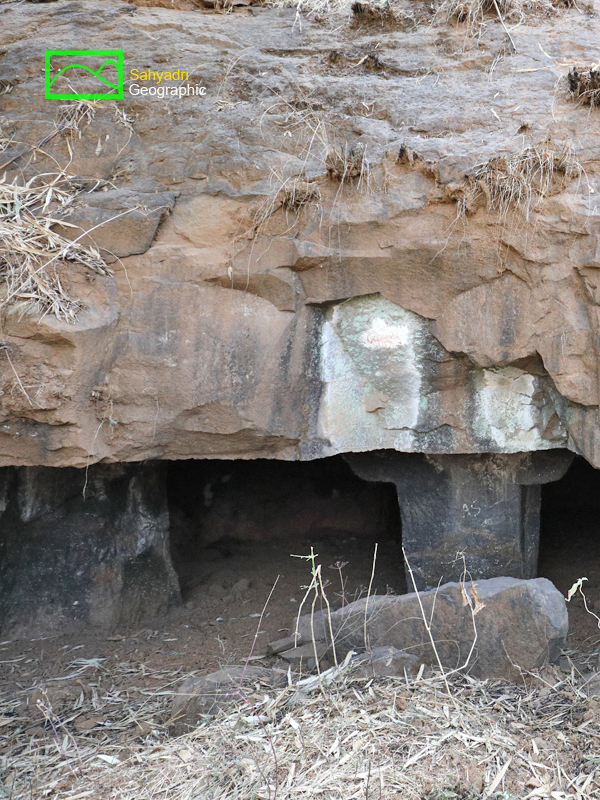  |
| |
| 5. Devghar Cave, Maval Tehsil, Pune district, Maharashtra, India |
| |
|
|
कार्ले लेणी समुहातील चैत्यगृहात असलेल्या एकुण २२ शिलालेखांपैकी १७ शिलालेख ग्रीक /इंडो बॅक्ट्रियन (यवन) देणगीदारांनी दिलेल्या दानांबद्दलचे आहेत. हे बहुतांश शिलालेख स्तंभांवर कोरलेले आहेत. हे यवन देणगीदार धेनुकाकट नावाच्या गावातले असल्याचे या शिलालेखांमध्ये नमूद केलेले आहे. धेनुकाकट, हे गाव आज नक्की कुठे आहे हे आपल्याला माहीत नाही. दामोदर कोसंबींनी या विषयावर एक शोध निबंध लिहिलेला आहे. चैत्यगृहात असलेल्या तीस अष्टकोनी खांबांवर पुढच्या आणि मागच्या बाजूला शिल्प आहेत. बहुसंख्य शिल्पात स्त्री आणि पुरुष, हत्ती, घोडे, बैल, मेंढ्यावर आरूढ झालेले दाखाविलेले आहेत. दोन खांबांवर मात्र, वेगळीच शिल्प आहेत. डावीकडच्या (उत्तरेकडील) अकराव्या खांबावर आणि उजवीकडच्या (दक्षिणेकडील) तेराव्या खांबावर पुरुष एका प्राण्यावर आरूढ झालेले दाखाविलेले आहेत. दोन्ही शिल्पात प्राण्याला मनुष्याचे शीर आणि प्राण्याचे (कदाचित सिंहाचे) शरीर दाखविलेले आहे. उजवीकडच्या तेराव्या खांबावरच्या प्राण्याचे कान लांब आहेत आणि पुढचे पंजे स्पष्ट दिसतात.
|
|
Out of the 22 inscriptions in the Chaityagriha of Karle Caves, 17 inscriptions are about donations from Greek / Indo Bactrian (Yavan) donors. Most of these inscriptions are carved on octagonal columns inside the main chaityagiha. The inscriptions tell us that many of the donors are from the village named Dhenukakata. We do not know exactly where this village was located. Damodar Kosambi has written a research essay on this topic. There are sculptures on the front and back of the thirty octagonal pillars in the chaityagriha. In most of these sculptures men and women are shown riding elephants, horses, bulls, or sheep. There are strange sculptures on the two of these pillars. Men are mounted on an animal on eleventh pillars (on the north side) and on the thirteenth pillar on the right side (on the south side). In both these sculptures, the animal has been shown with human head and animal (perhaps lion's) body. The headcover of the animal on the right side is drooping long (as if these are ears) and its front toes are clearly visible. There is a pedestal below this sculpture unlike any other sculpture, indicating that this was a copy of some small sculpture of this type.
|
|
|
| |
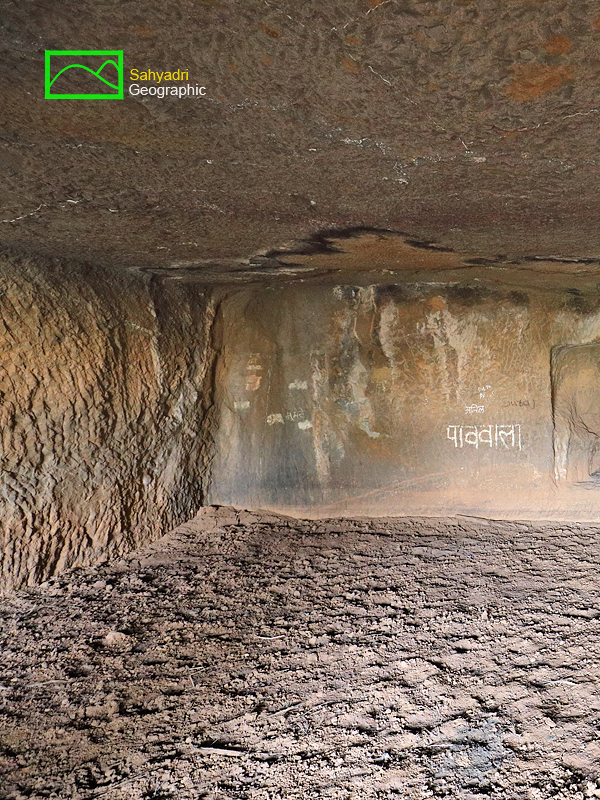  |
| |
| 6. Devghar Cave, Maval Tehsil, Pune district, Maharashtra, India
|
| |
|
|
असा प्राणी ग्रीक संस्कृतीत स्फिन्क्स म्हणुन ओळखला जातो. याच प्रकारची सॅण्टार शिल्प (मनुष्याचे शीर आणि घोडयाचे शरीर असलेले शिल्प) भाजे लेण्यात पहावयाला मिळते. मनुष्याचे शीर आणि प्राण्याचे शरीर अशी संकल्पना भारतीय संस्कृतीत फारशी नाही. त्यामुळे अशी संकल्पना बाहेरून आली असावी. ग्रीक संस्कृतीचा थोडा पगडा त्या काळातील भारतीय लेण्यांवर पडलेला दिसतो. धेनुकाकट येथे इंडोबॅक्ट्रियन लोकांची वस्ती नसून ते ग्रीक होते असा अन्वयार्थ दामोदर कोसंबींनी त्यांच्या लेखात मांडला आहे. धेनुकाकट कुठे होते हे स्पष्ट नाही. या गावाचा उल्लेख कार्ले , शेलारवाडी आणि कान्हेरी येथे शिलालेखात आढळलेला आहे. कार्ले येथे १७ ठिकाणी , शेलारवाडी येथे एका , कान्हेरी येथे एका ठिकाणी या धेनुकाकट गावाचा उल्लेख आहे. धेनुकाकटा शब्द "धेउकडा" या शब्दापासून उत्पत्तीत असावा आणि "धेउकडा" या शब्दातुन देवगड असा शब्द तयार झाला असावा. असे कोसंबींनी मांडले आहे. धेनुकाकट म्हणजेच देवघर असे त्यांचे म्हणणे होते. आज सुद्धा एकविरा देवीची यात्रा देवघर पासून सुरु होते. आणि कार्ले येथे देवीची पालखी जाते.
|
|
Such a creature is known as Sphinx in Greek culture. This type of concept (man's head and horse-shaped craft) is not so prevalent concept in India culture. That is why such an idea may have come from outside. A slight effect of Greek culture seems to be seen on Indian caves of that era. Damodar Kosambi has written an explanation that these clues suggest that the Yavans mentioned in the inscriptions at Karle must have been Greeks more than the Indo Bactrians. It is not clear where Dhenukakat was located. This village has been mentioned in the inscriptions at Karle, Shelarwadi and Kanheri. There are 17 mentions in Karle, one in Shelarwadi, one in Kanheri, of this place, the village of Dhenukakata.
The word Dhenukakata should be derived from the word "Dheukada" and the word "Dheukada" should have been derived from the word Devgad. This is the analysis of this word as per Kosambi. At Devghar. even today, the journey of Ekavira Devi (deity) starts from Devghar and the goddess is taken to Karle in a procession. However there is no temple of Ekavira at Devghar.
|
|
|
| |
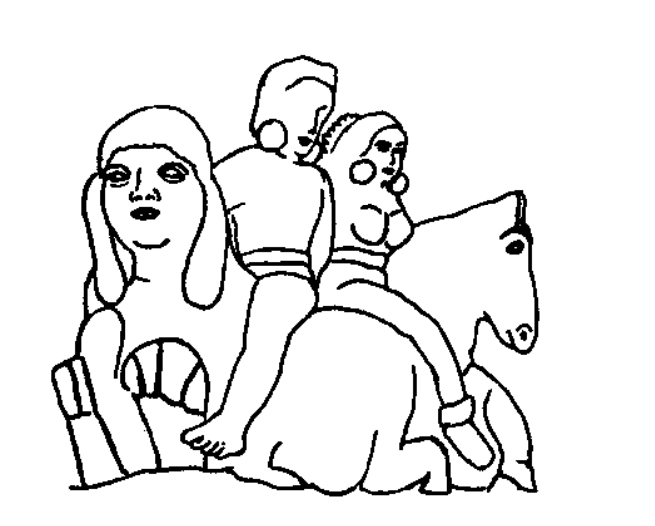 |
| |
| 7. Karle Sculpture, Maval Tehsil, Pune district, Maharashtra, India, (Ref : D.D. Kosambi)
|
| |
|
|
असा प्राणी ग्रीक संस्कृतीत स्फिन्क्स म्हणुन ओळखला जातो. याच प्रकारची सॅण्टार शिल्प (मनुष्याचे शीर आणि घोडयाचे शरीर असलेले शिल्प) भाजे लेण्यात पहावयाला मिळते. मनुष्याचे शीर आणि प्राण्याचे शरीर अशी संकल्पना भारतीय संस्कृतीत फारशी नाही. त्यामुळे अशी संकल्पना बाहेरून आली असावी. ग्रीक संस्कृतीचा थोडा पगडा त्या काळातील भारतीय लेण्यांवर पडलेला दिसतो. धेनुकाकट येथे इंडोबॅक्ट्रियन लोकांची वस्ती नसून ते ग्रीक होते असा अन्वयार्थ दामोदर कोसंबींनी त्यांच्या लेखात मांडला आहे. धेनुकाकट कुठे होते हे स्पष्ट नाही. या गावाचा उल्लेख कार्ले , शेलारवाडी आणि कान्हेरी येथे शिलालेखात आढळलेला आहे. कार्ले येथे १७ ठिकाणी , शेलारवाडी येथे एका , कान्हेरी येथे एका ठिकाणी या धेनुकाकट गावाचा उल्लेख आहे. धेनुकाकटा शब्द "धेउकडा" या शब्दापासून उत्पत्तीत असावा आणि "धेउकडा" या शब्दातुन देवगड असा शब्द तयार झाला असावा. असे कोसंबींनी मांडले आहे. धेनुकाकट म्हणजेच देवघर असे त्यांचे म्हणणे होते. आज सुद्धा एकविरा देवीची यात्रा देवघर पासून सुरु होते. आणि कार्ले येथे देवीची पालखी जाते.
|
|
Such a creature is known as Sphinx in Greek culture. This type of concept (man's head and horse-shaped craft) is not so prevalent concept in India culture. That is why such an idea may have come from outside. A slight effect of Greek culture seems to be seen on Indian caves of that era. Damodar Kosambi has written an explanation that these clues suggest that the Yavans mentioned in the inscriptions at Karle must have been Greeks more than the Indo Bactrians. It is not clear where Dhenukakat was located. This village has been mentioned in the inscriptions at Karle, Shelarwadi and Kanheri. There are 17 mentions in Karle, one in Shelarwadi, one in Kanheri, of this place, the village of Dhenukakata.
The word Dhenukakata should be derived from the word "Dheukada" and the word "Dheukada" should have been derived from the word Devgad. This is the analysis of this word as per Kosambi. At Devghar. even today, the journey of Ekavira Devi (deity) starts from Devghar and the goddess is taken to Karle in a procession. However there is no temple of Ekavira at Devghar.
|
|
|
| |
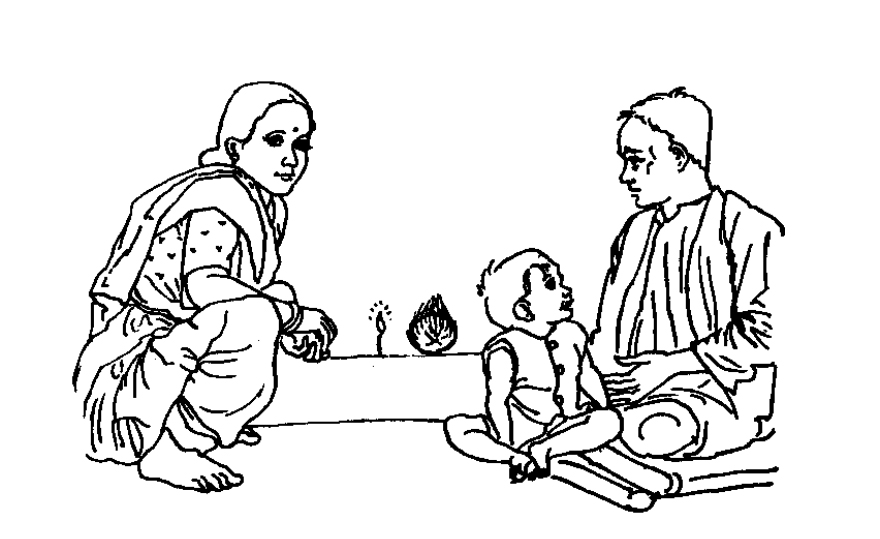 |
| |
| 8. Fishermen community at Karle, Maval Tehsil, Pune district, Maharashtra, India (Ref : D.D. Kosambi)
|
| |
|
|
| |
  |
| |
| 9. Devghar Cave, Maval Tehsil, Pune district, Maharashtra, India |
| |
|
|
देवघर येथे कोकणातल्या कोळी समाजाचे देवस्थान आहे. कोळी लोकांचा कोकणातली असलेल्या समुद्र बंदरांशी असलेला संबंध, प्राचीन काळात होत असलेला भारत-ग्रीक समुद्र मार्गे होणारा व्यापार, कार्ले लेण्यांत कल्याण सोपारा या बंदरांचा शिलालेखात उल्लेख, शिलालेखात असलेला व्यापारी वर्गाचा उल्लेख, कोळी लोकांची एकविरा आणि स्तुपावर असलेली धार्मिक श्रध्दा, कोळ्यांचे देवघर येथे असलेले देवस्थान, देवघर येथे असलेलया लेणी, पाण्याची टाकी, आणि जवळच असलेला प्राचीन व्यापारी मार्ग या सगळयांची सांगड घालत कोसंबींनी देवघर म्हणजे धेनुकाकट असावे का असा प्रश्न विचारला आहे. धेनुकाकट गावाचा एक उल्लेख शेलारवाडी येथे आढळतो. येथील शेतकऱ्याच्या पत्नीने दान दिल्याचे या शिलालेखात लिहिलेले आहे. याचा अर्थ गाव जवळच असावे. इतर अभ्यासकांनी धेनुकाकट म्हणजे डहाणू , धरणीकोटा अशी विविध मत मांडली आहेत. देवघर येथे एक पुरातन शिव मंदिर आहे. येथे मोठे पाण्याचे कातळात कोरलेले पाण्याचे सरोवर आहे. या भागात उत्खनन करून शोध घेतला तर उलगडा होऊ शकतो असे कोसंबीनी लिहिलेले आहे.
|
|
There is a temple of Koli community (fishermen) of Konkan in Devghar. The connection between sea ports in Konkan of Koli people, trade between the ancient India-Greek seas, mentions in the inscriptions of the names of the port of Kalyan, Sopara, mention of business community donations in inscriptions, the religious festivals on the Ekvira and the Stupa by the Koli people, the Koli temple at devghar, the caves found at Deoghar, the water tank, and the ancient trade routes nearby Devghar and Waksai are various aspects why Damoder Kosambi tried to relate Devghar as Dhenukkakata
A mention of Dhenukakata village is found at Shelarwadi cave. This inscription is about the farmer's wife and her donation for the cave. This means that the village should be nearby. Other researchers have identified Dhenukakata as Dahanu or Dharanikota. Devghar is an ancient Shiva temple. There is a rock cut water lake at Devghar. Kosambi felt that excavation of this water lake may throw some light on the mystery of this unidentified “Dhenukakata”.
|
|
|
| |
 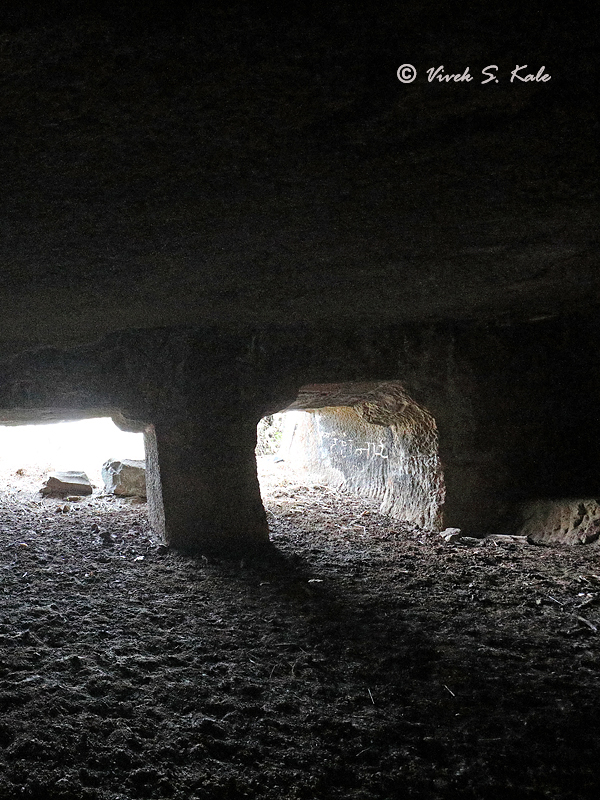 |
| |
| 10. Devghar Cave, Maval Tehsil, Pune district, Maharashtra, India |
| |
|
|
जेम्स फर्ग्युसन आणि जेम्स बर्जेस यांनी त्यांच्या "केव्ह टेंपल्स ऑफ इंडिया" या १८८० साली प्रकाशित केलेल्या पुस्तकात देवघर गाव आणि येथील लेणे, पाण्याच्या टाक्यांचा उल्लेख केला आहे. टाक्यांजवळच्या अर्धवट कोरीव कामाचं सुद्धा त्यांनी उल्लख केला आहे.
|
|
Earlier records: James Fergusson and James Burgess have mentioned about the Devghar cave in their 1880 publication, “Cave temples of India”. They have also mentioned about the two water cisterns south east of Devghar near a hillock near Waksai along the ancient trade route. The rock cut surface close to the water cistern is also described in their book.
|
|
|
| |
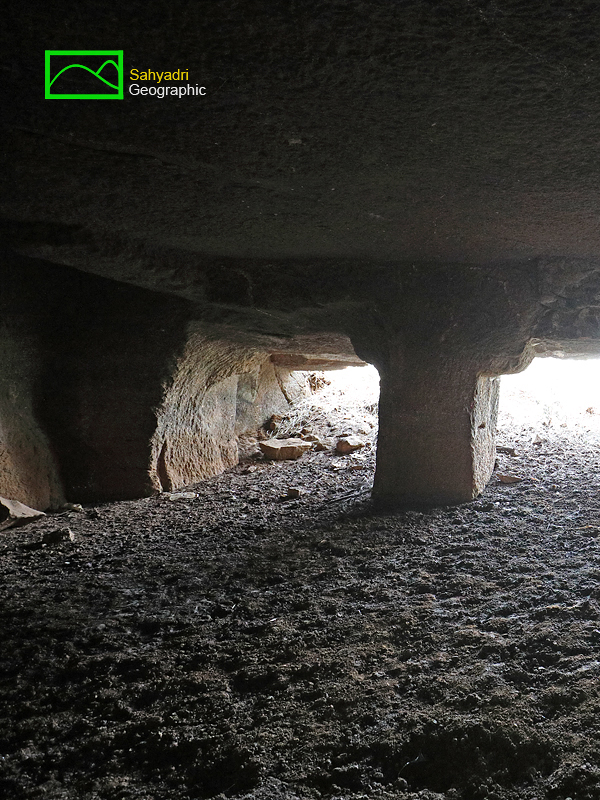 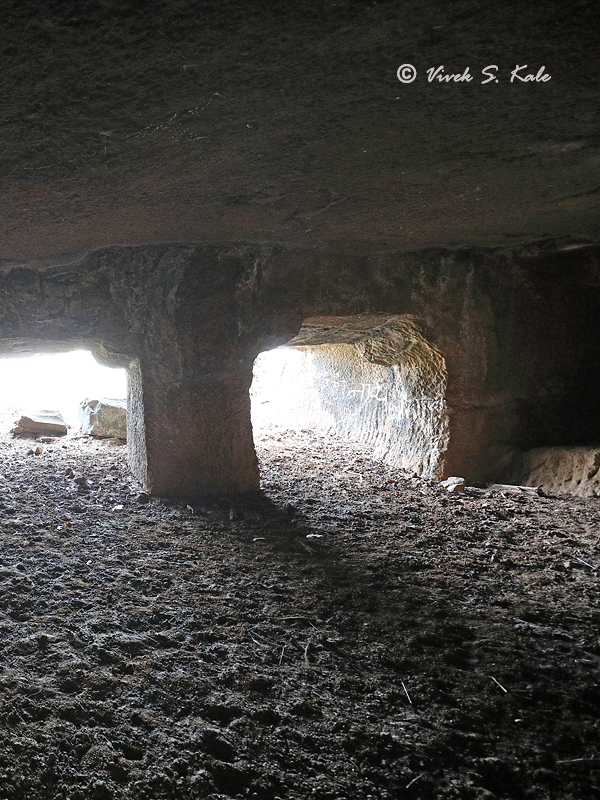 |
| |
| 11. Devghar cave, Maval Tehsil, Pune district, Maharashtra, India |
| |
|
|
| |
  |
| |
| 12. Devghar cave, Maval Tehsil, Pune district, Maharashtra, India |
| |
|
|
| |
 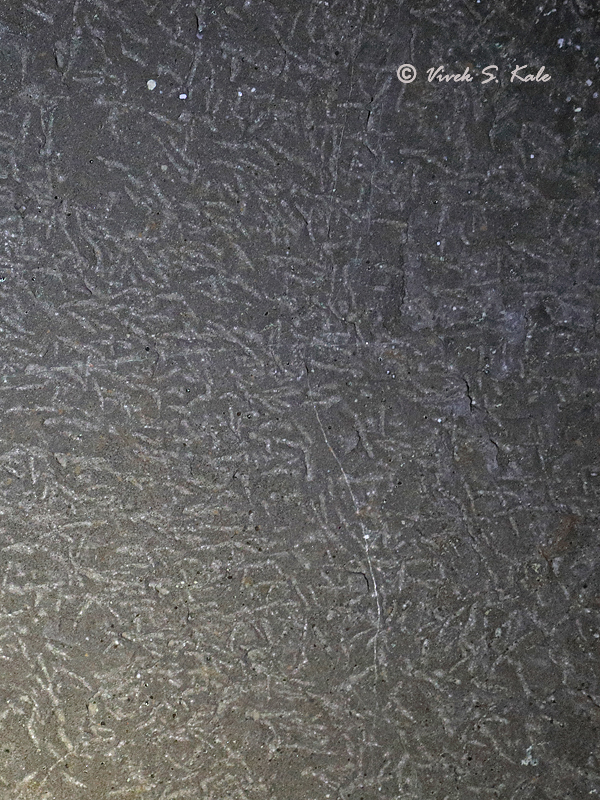 |
| |
| 13. Devghar cave, Maval Tehsil, Pune district, Maharashtra, India |
| |
|
|
| |
 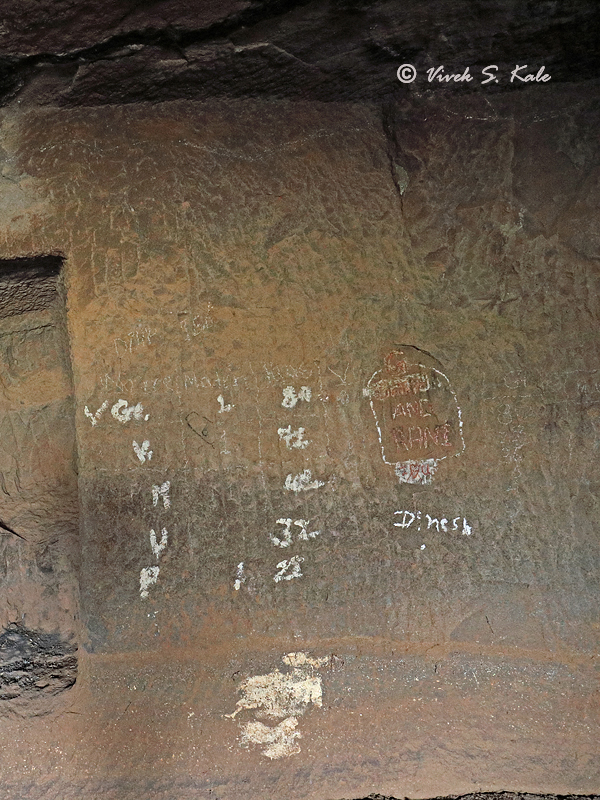 |
| |
| 14. Devghar Cave, Maval Tehsil, Pune district, Maharashtra, India |
| |
|
|
| |
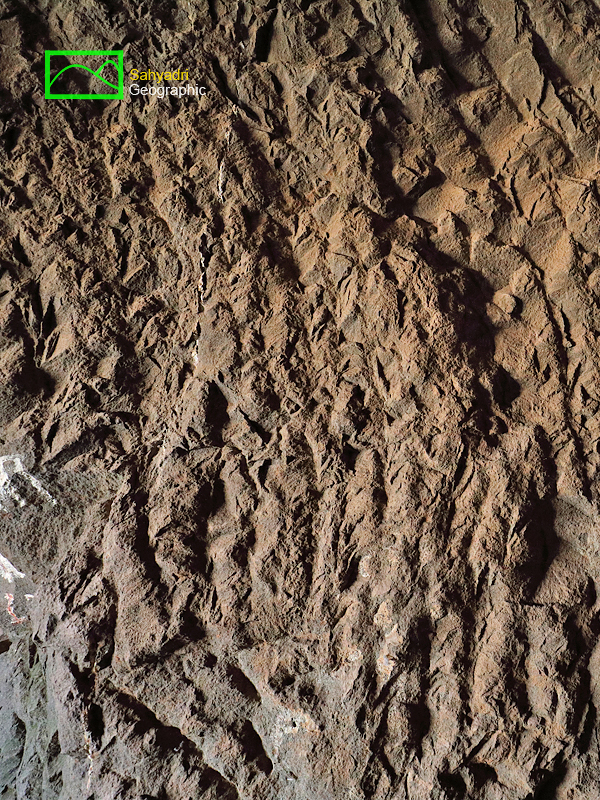  |
| |
| 15. Devghar Cave, Maval Tehsil, Pune district, Maharashtra, India |
| |
|
|
| |
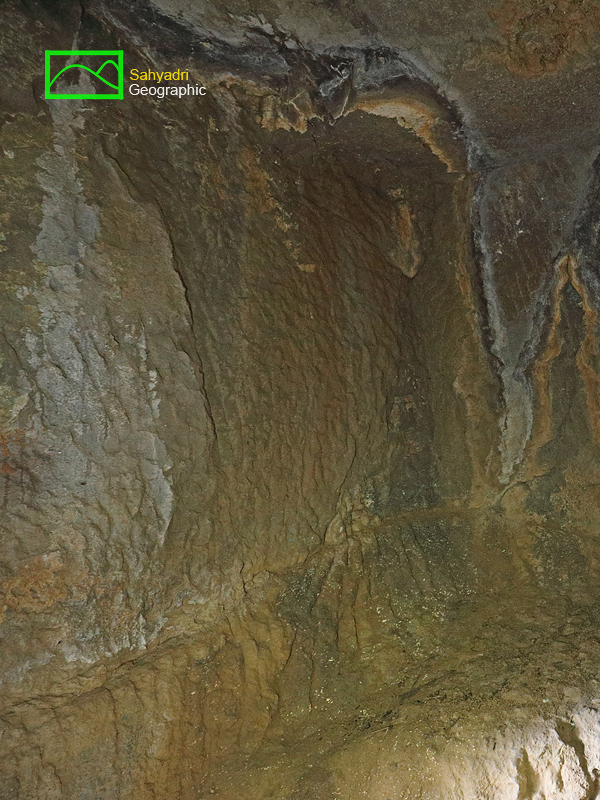 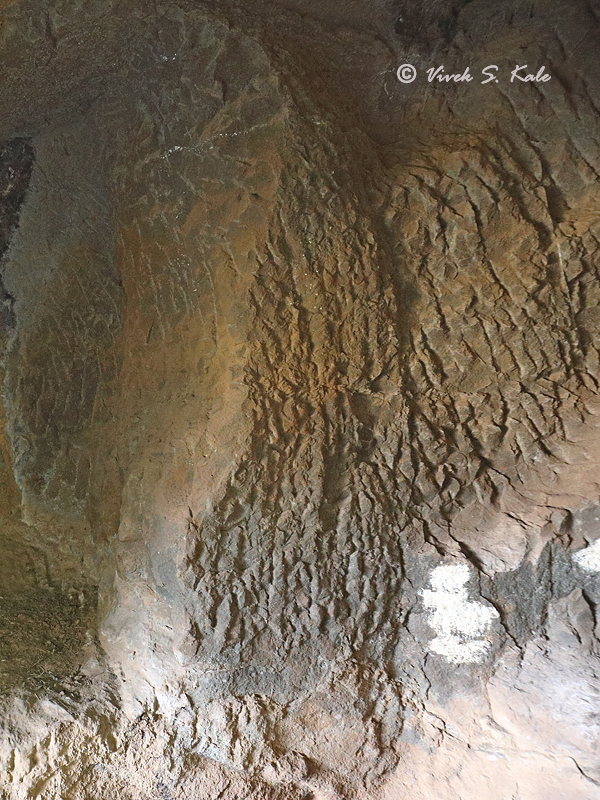 |
| |
| 16. Devghar Cave, Maval Tehsil, Pune district, Maharashtra, India |
| |
|
|
| |
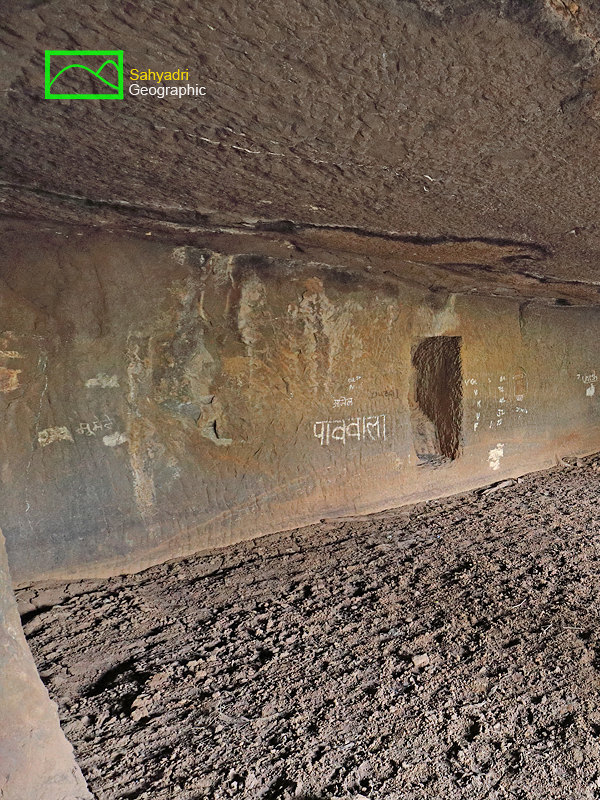 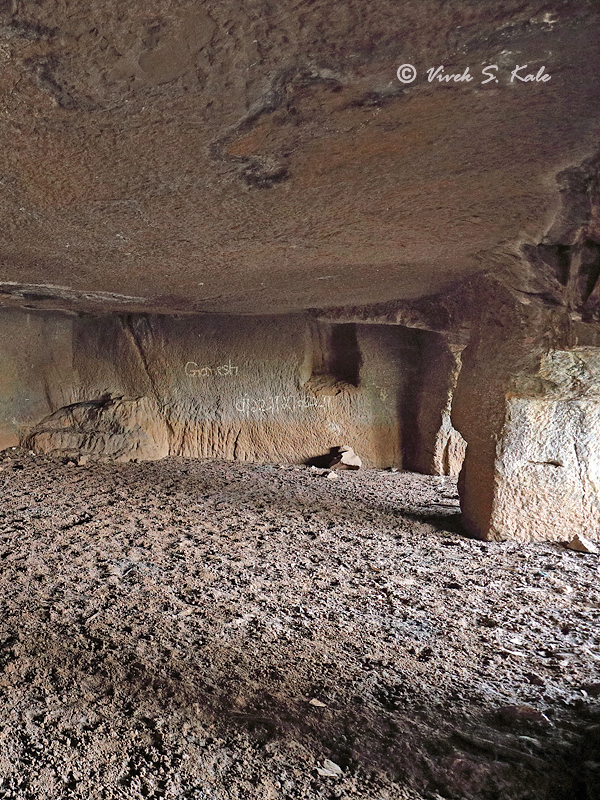 |
| |
| 17. Devghar Cave, Maval Tehsil, Pune district, Maharashtra, India |
| |
|
|
| |
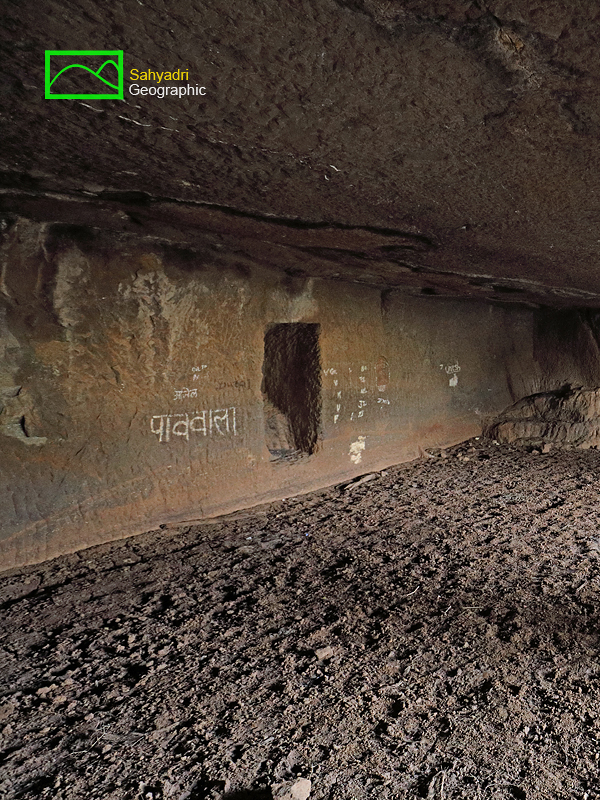 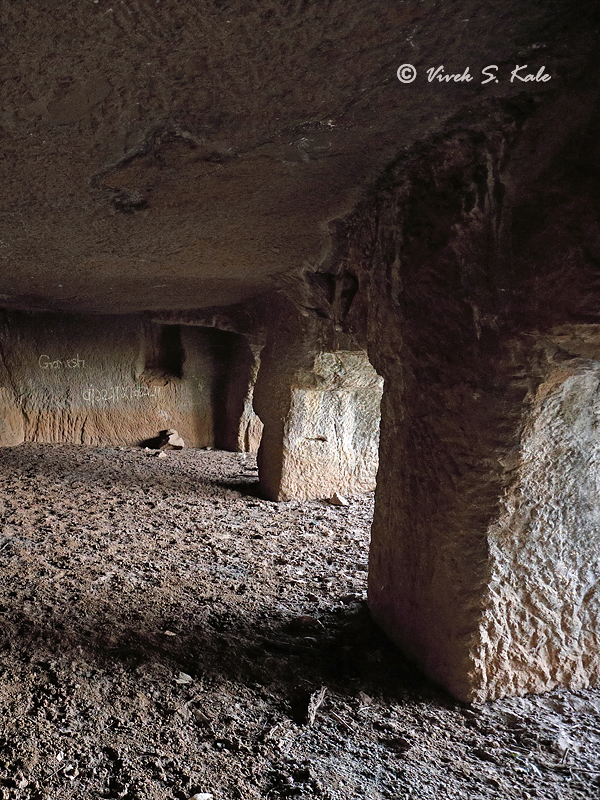 |
| |
| 18. Devghar Cave, Maval Tehsil, Pune district, Maharashtra, India |
| |
|
|
| |
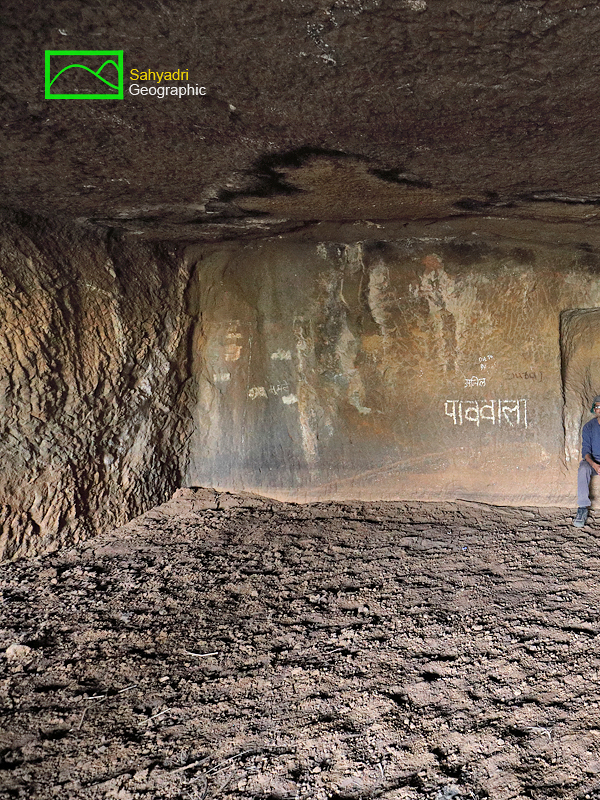 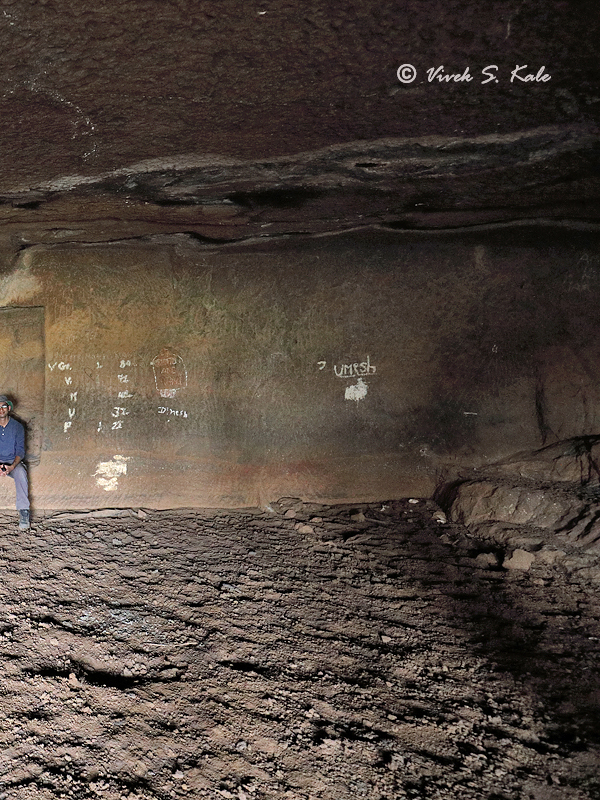 |
| |
| 19. Devghar Cave, Maval Tehsil, Pune district, Maharashtra, India |
| |
|
|
| |
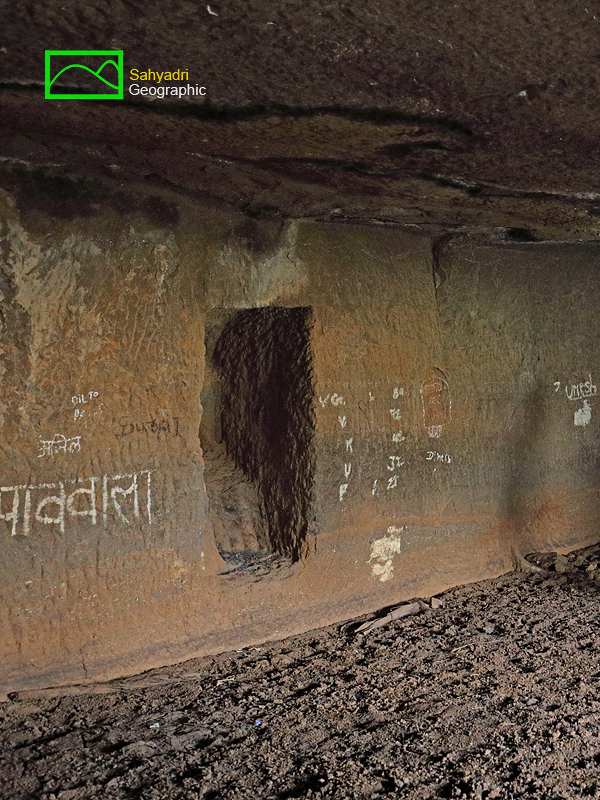 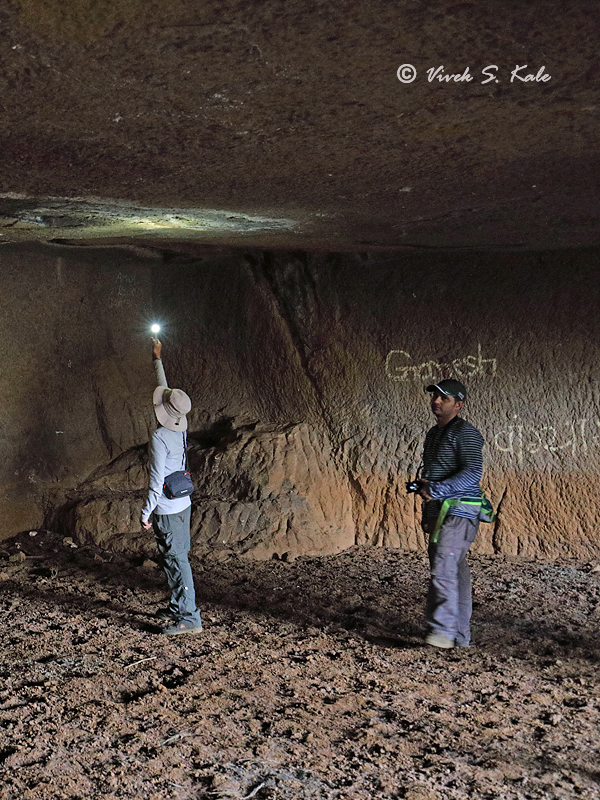 |
| |
| 20. Devghar Cave, Maval Tehsil, Pune district, Maharashtra, India |
| |
|
|
| |
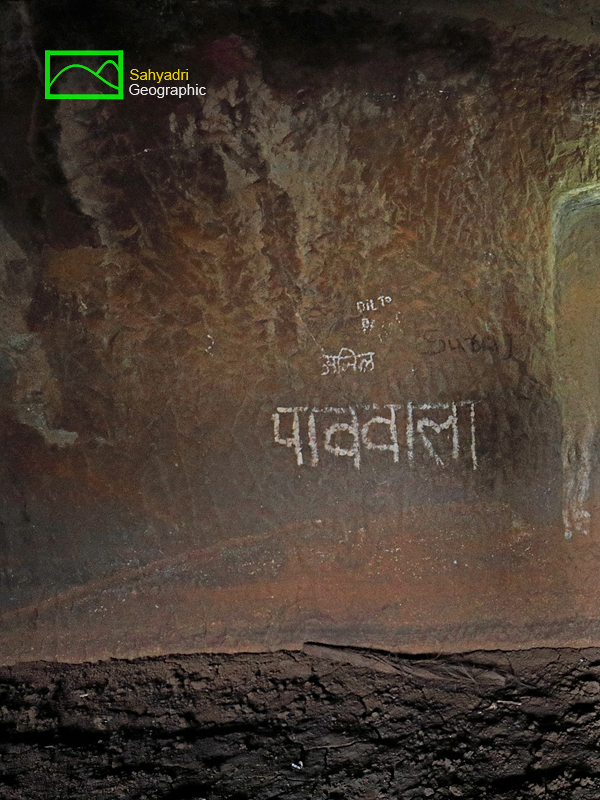 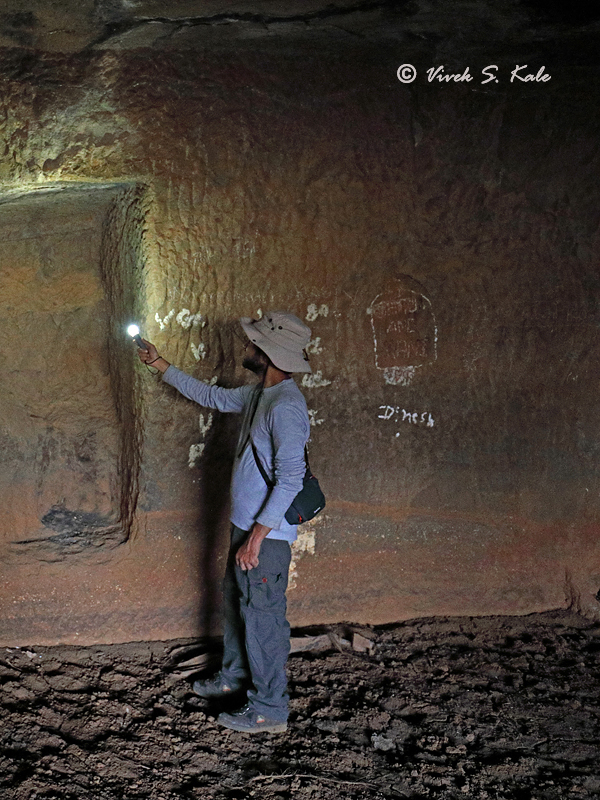 |
| |
| 21. Devghar Cave, Maval Tehsil, Pune district, Maharashtra, India |
| |
|
|
| |
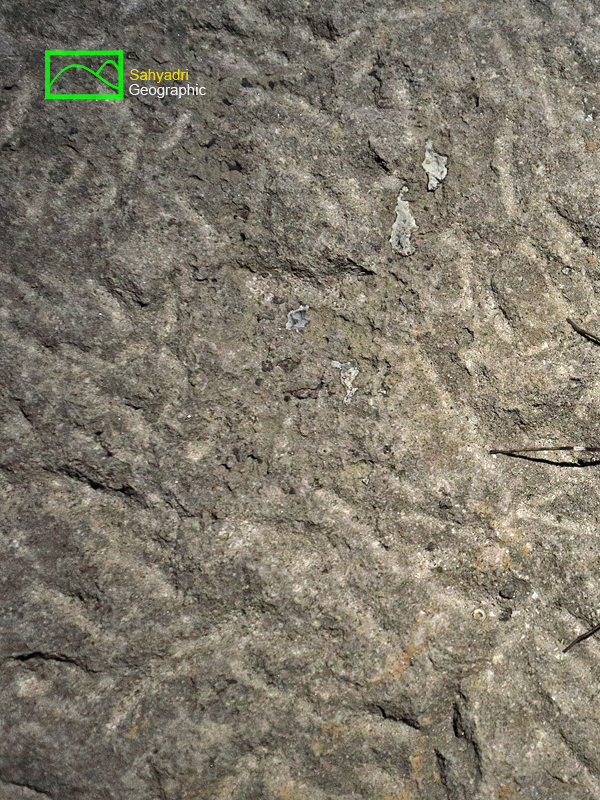 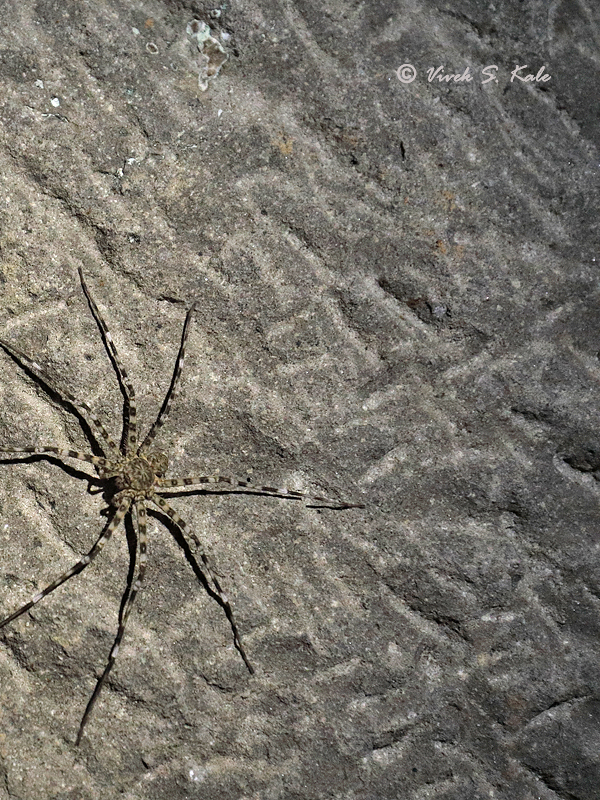 |
| |
| 22. Devghar Cave, Maval Tehsil, Pune district, Maharashtra, India |
| |
|
|
| |
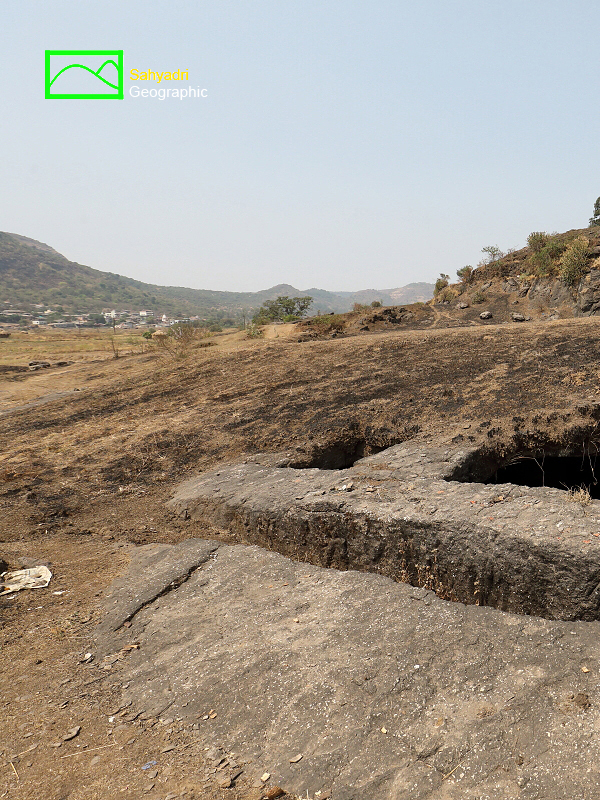 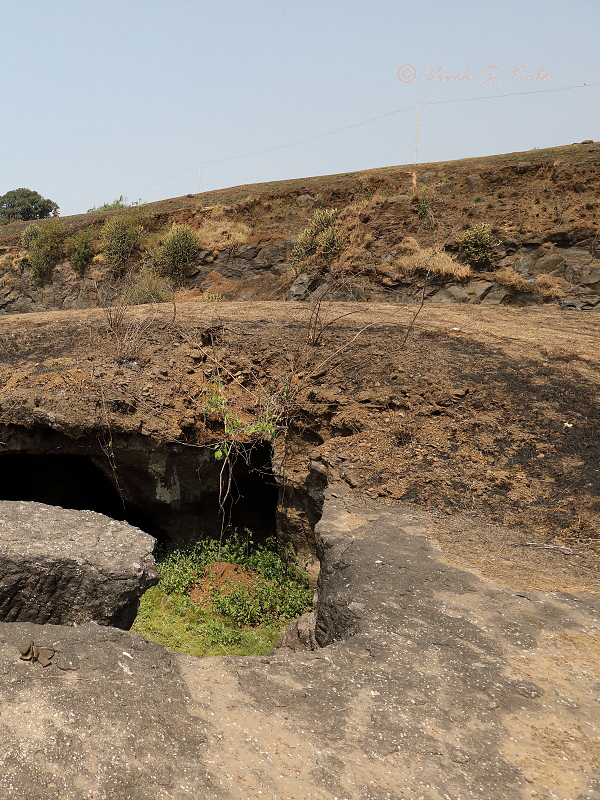 |
| |
| 23. Waksai-Devhar water cistern (West), Maval Tehsil, Pune district, Maharashtra, India |
| |
|
|
वाकसई पाण्याचे टाके (पश्चिम) : देवघर गावाच्या पूर्व दक्षिण बाजूस दोन पाण्याची टाकी आहेत. यातील पश्चिमेकडचे टाके टाकवे खुर्द गावाजवळच्या टाक्यासारखे आहे. वाकसई पाण्याचे टाके (पश्चिम) जमिनीखाली कातळात कोरलेले आहे. यात आधारासाठी दोन खांब वजा भिंती आहेत. टाके अंदाजे चौकोनी आहे. त्याच्या सर्व बाजु च्या भिंती या सरळ नाहीत. एका बाजूला खोदकाम अर्धवट सोडलेले आहे. कातळात वर टाक्याला चौरस मुख (झरोके) होते. आज त्यातील फक्त एक चौरस झरोका (मुख) पहावयाला मिळते. इतर चौरस मुखांच्या भागात छत कोसळलेले आहे आणि छताला आहेत. टाकव्याप्रमाणे इथे सुद्धा कदाचित शिलालेख होते असण्याची शक्यता आहे. मात्र पडझडी मुळे आज आपल्याला याबाबत नक्की काय ते सांगता येत नाही. टाक्याचा आकार अंदाजे ६ मीटर बाय ६ मीटर असून उंची अंदाजे २ ते २.२ मीटर आहे. टाक्यात भरपूर गाळ आहे. या गाळात जुनी मातीची खापर आढळतात. टाक्यावर कातळावर शेंदूर फासलेला आढळतो. मावळातल्या साती आसरा म्हणजे मावळया देवतेची इथे पूजा होत असावी. या टाक्याच्या दक्षिण कडेला आत उतरण्यासाठी एक अरुंद उतार कोरलेला आढळतो. जेमेतेम एक माणुस उतरेल एवढीच या उताराची रुंदी आहे. टाक्याच्या मागच्या बाजूला असलेल्या टेकाडावर महादेवाचे मंदिर आहे. या टेकडीचा बराच भाग (टाक्या च्या जवळ पर्यंत ) दगडी खाण करण्यासाठी पोखरलेला आहे. आजूबाजूला जमिनी ची विक्री चालु आहे. लोणावळ्यापासून सुरु झालेले शहरीकरणाचे खुळ इथपर्यंत पोहोचले आहे. हे टाके महामार्गापासून १०० मीटर अंतरावर आहे. शहरीकरणात हे टाके लुप्त होणायची शक्याता आहे. याचे संवर्धन होणे महत्वाचे आहे. अन्यथा प्राचीन व्यापारी मार्गावरची एक महत्वाची वास्तू हरपण्याची शक्यता आहे.
|
|
Description of Water cistern (west) : On the south east of the village Devghar there is a underground rock cut water cistern, very much similar to that at Takve khurd, but slightly different plan. The rock cut cistern has square shaped openings very similar to that at Takve. Only one square opening can be seen today. The other two square openings can not be seen as the ceiling has collapsed in that area. There is a sloping gradual walkway to access the water, on the southern end of the water cistern. Refer sketch. There are no traces of inscription here and it might have been on the collapsed openings. There are two pillar like walls in the underground cistern which support the celing. The shape of the water cistern is irregular on the east side, indicating that the work was not fully finished. One of the wall carving is incomplete. The stone quarry work in modern times, immediately behind the cistern has partly damaged the water cistern and few cracks can be seen in the intact ceiling of the water cistern. In recent times, the Mavalyaa or Sati asaraa deity was established at the cistern as few Shendur marks indicate on the top of the water cistern. The tank is about 6 meter by 6 meter in plan area and is about 2 to 2.2 meter in depth. The total capacity of this water cistern is about xxx liters. The close proximity of this water cistern to the ancient trade route indicates that this other than few cisterns on the ancient trade route needs conservation and protection, as the region goes through the urban development.
|
|
|
| |
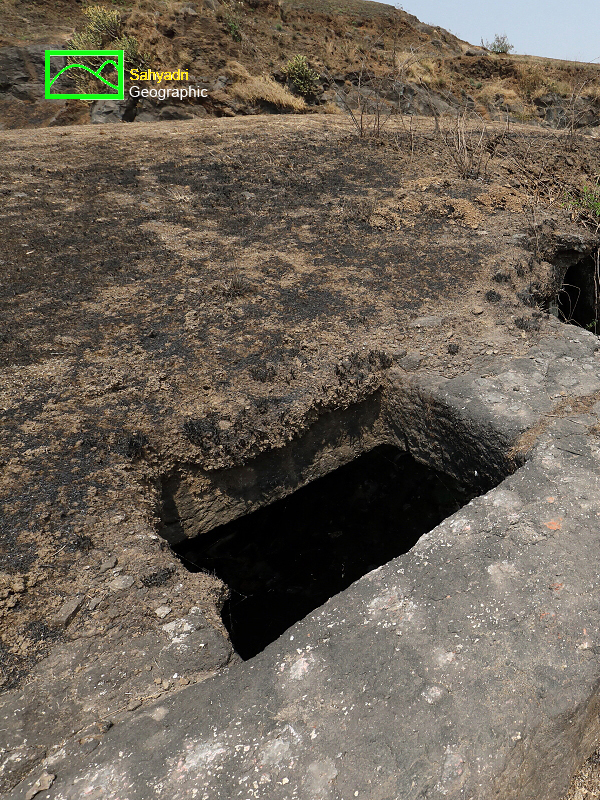 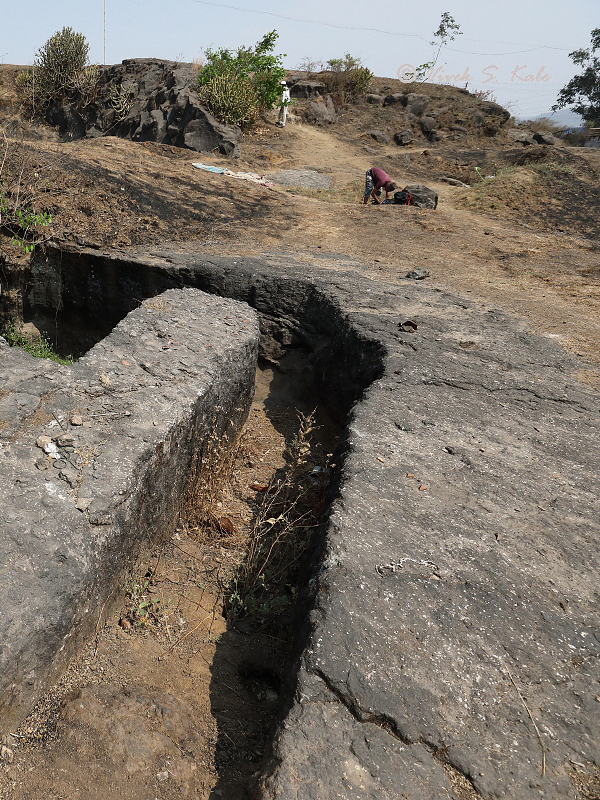 |
| |
| 24. Waksai-Devhar water cistern(West), Maval Tehsil, Pune district, Maharashtra, India |
| |
|
|
| |
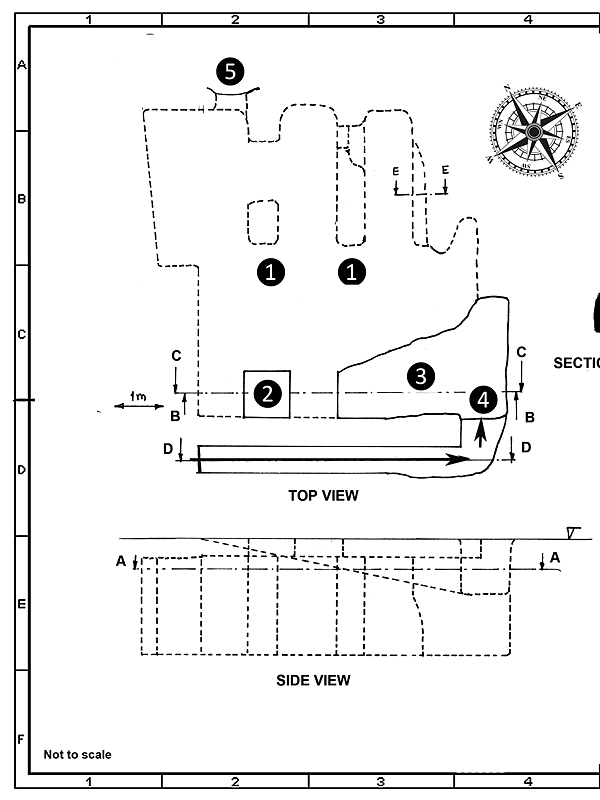 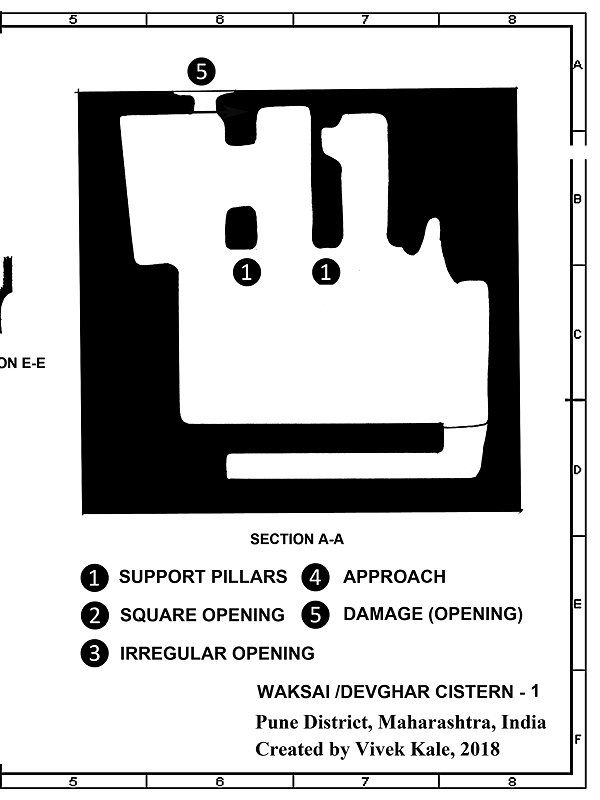 |
| |
| 25. Waksai-Devhar water cistern layout (West), Maval Tehsil, Pune district, Maharashtra, India |
| |
|
|
| |
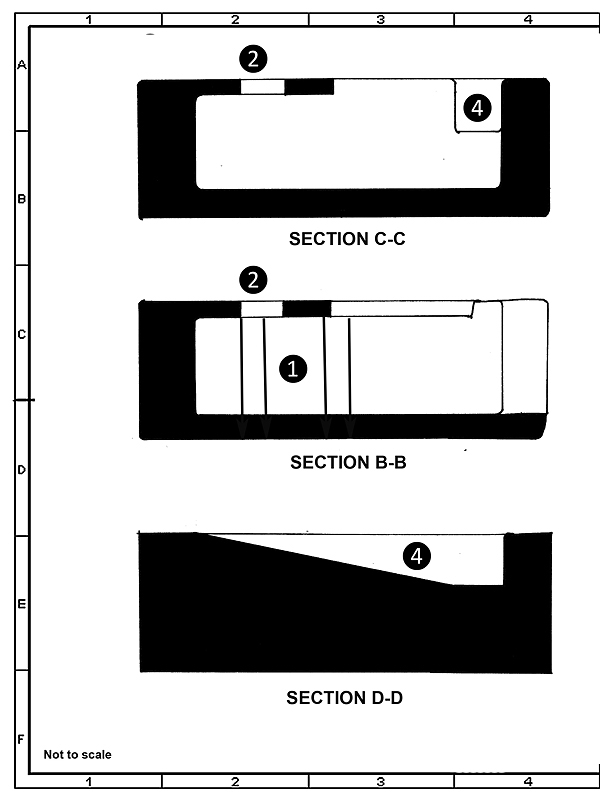  |
| |
| 26. Waksai-Devhar water cistern (west) layout , Maval Tehsil, Pune district, Maharashtra, India |
| |
|
|
| |
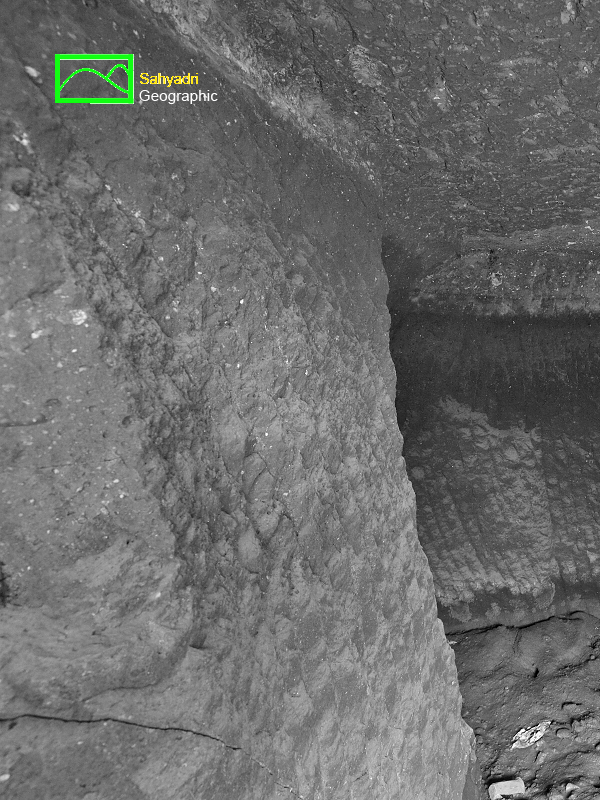 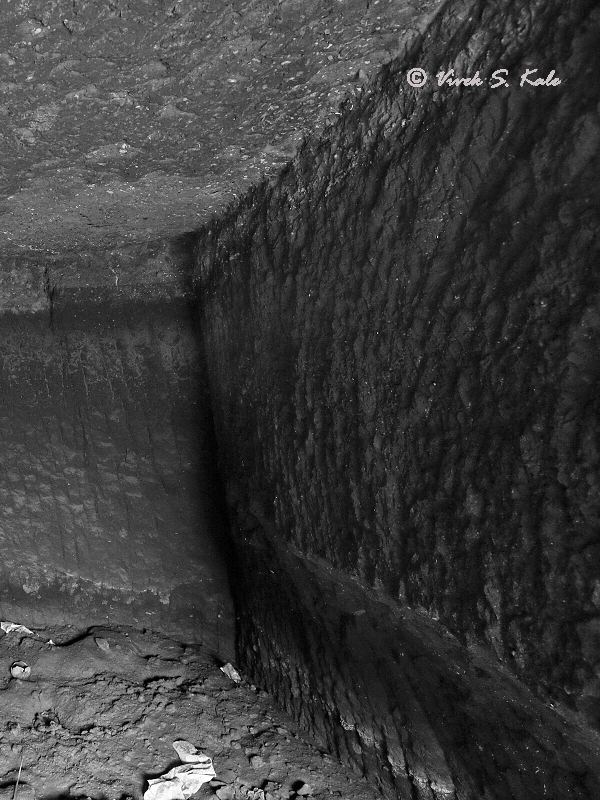 |
| |
| 27. Waksai-Devhar water cistern(west), Maval Tehsil, Pune district, Maharashtra, India |
| |
|
|
| |
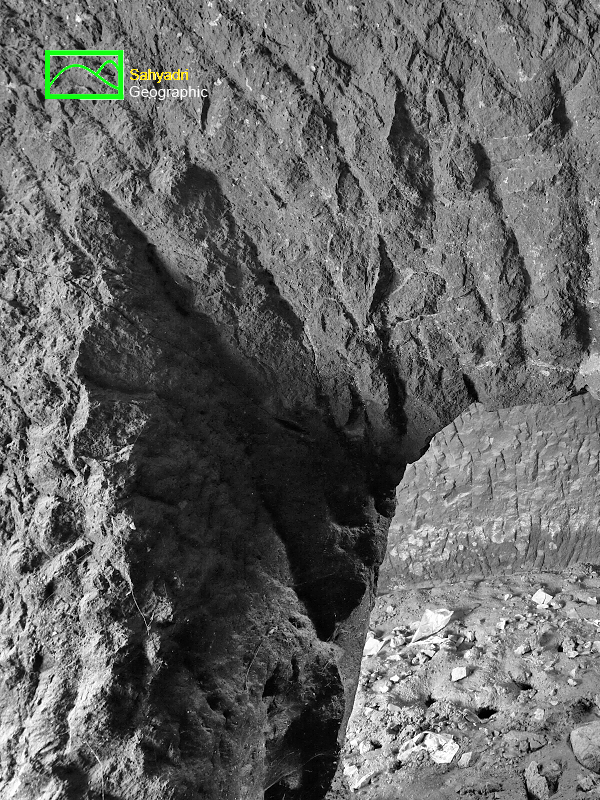 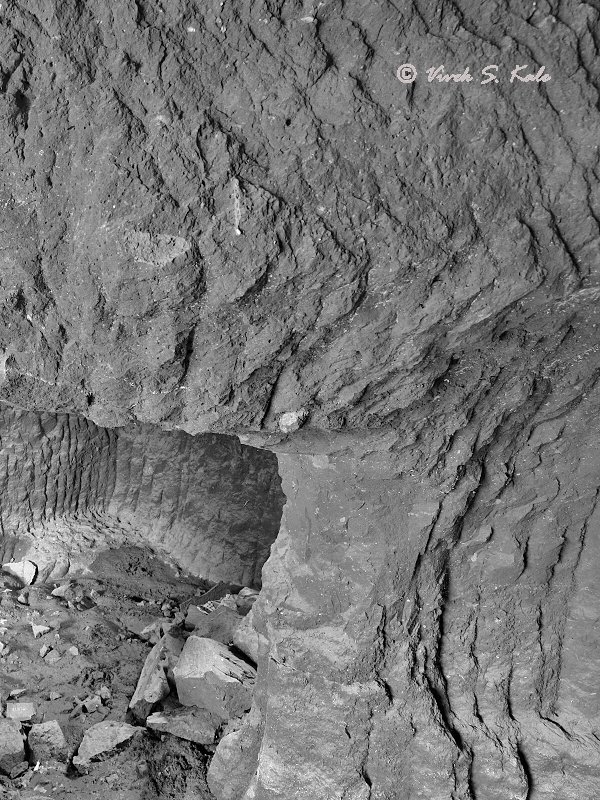 |
| |
| 28. Waksai-Devhar water cistern(west), Maval Tehsil, Pune district, Maharashtra, India |
| |
|
|
| |
  |
| |
| 29. Waksai-Devhar water cistern(west), Maval Tehsil, Pune district, Maharashtra, India |
| |
|
|
| |
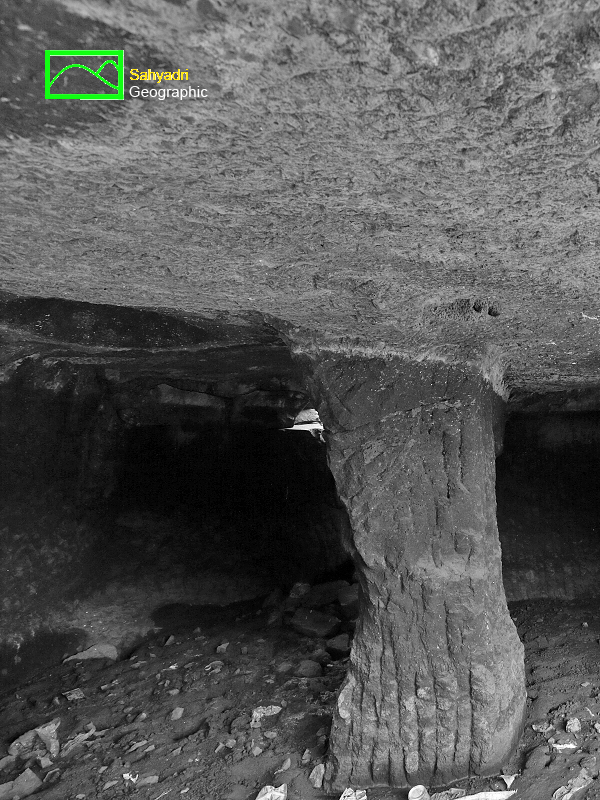  |
| |
| 30. Waksai-Devhar water cistern(west), Maval Tehsil, Pune district, Maharashtra, India |
| |
|
|
| |
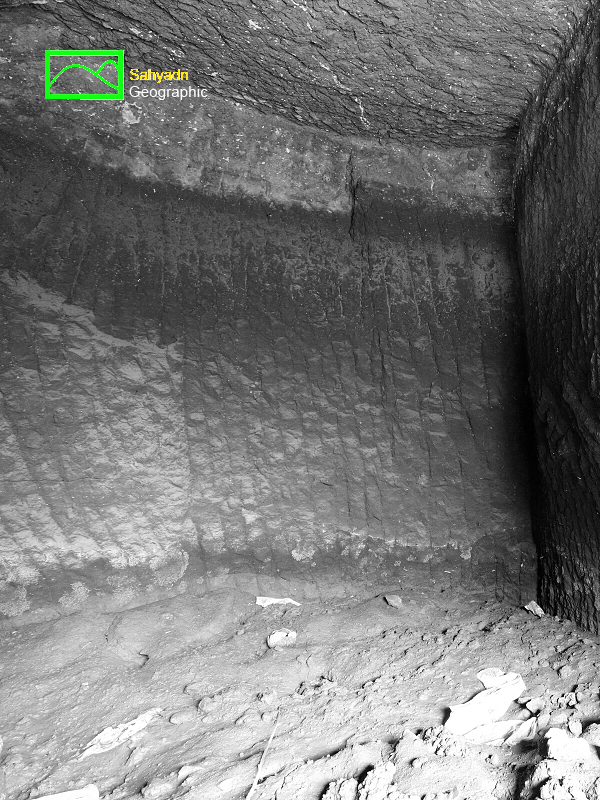 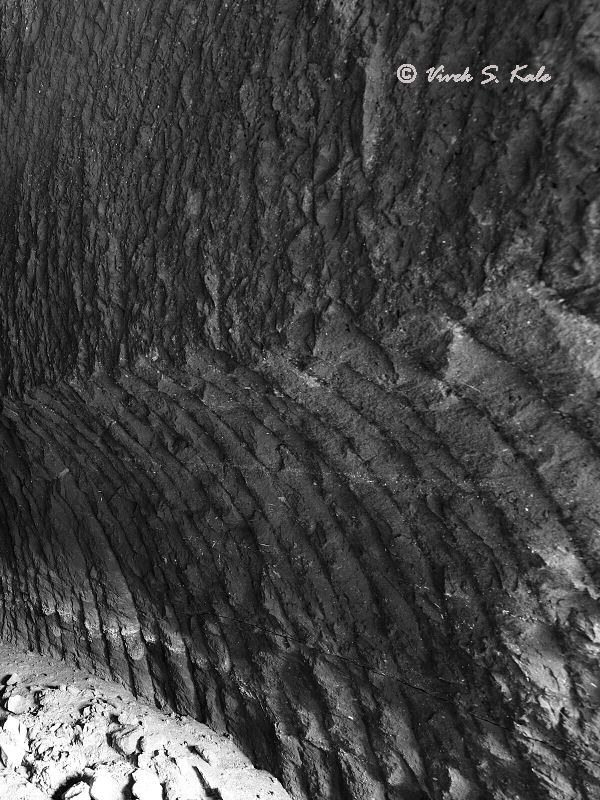 |
| |
| 31. Waksai-Devhar water cistern(west), Maval Tehsil, Pune district, Maharashtra, India |
| |
|
|
| |
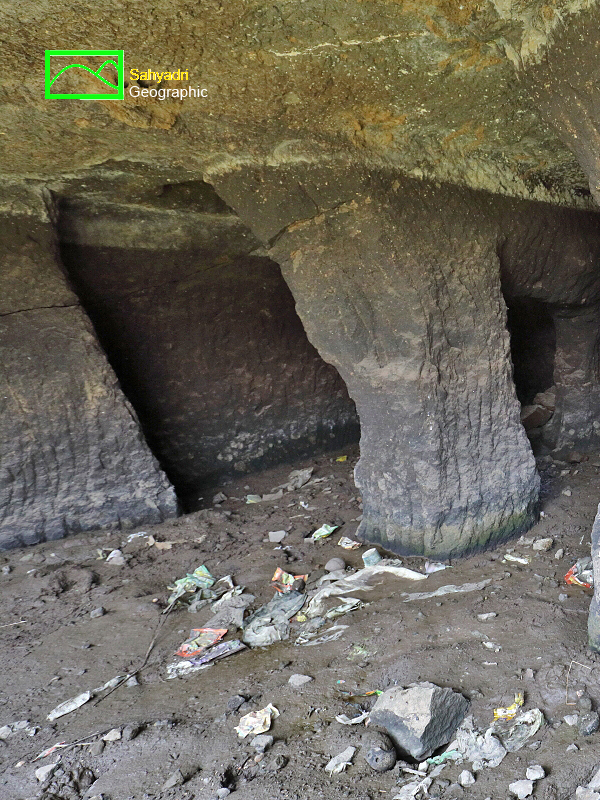 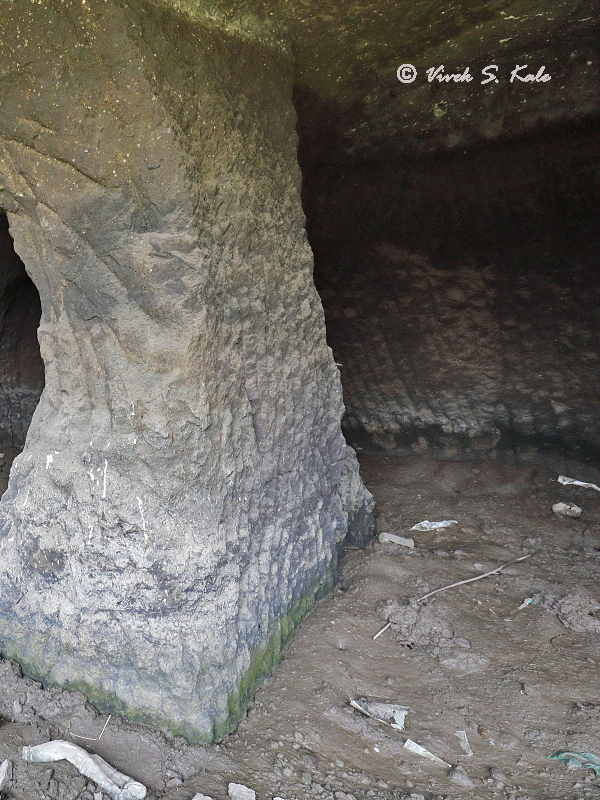 |
| |
| 32. Waksai-Devhar water cistern (west), Maval Tehsil, Pune district, Maharashtra, India |
| |
|
|
| |
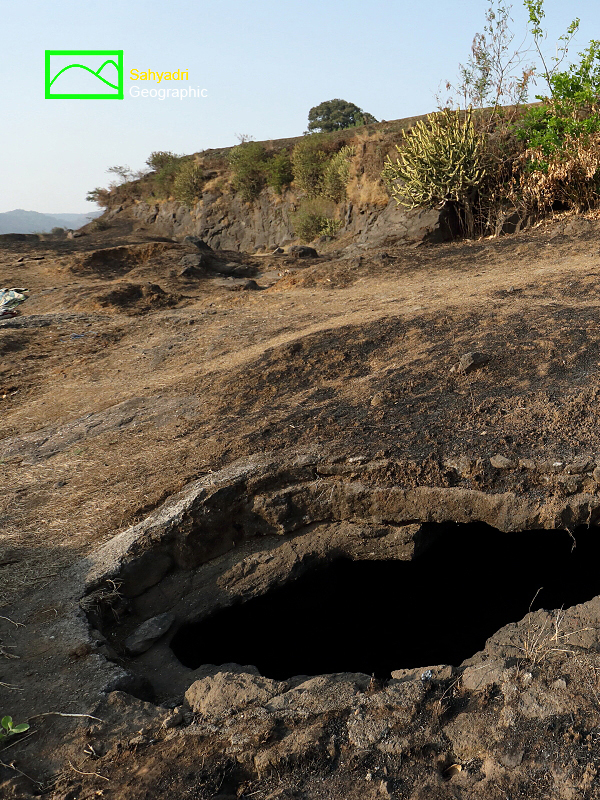 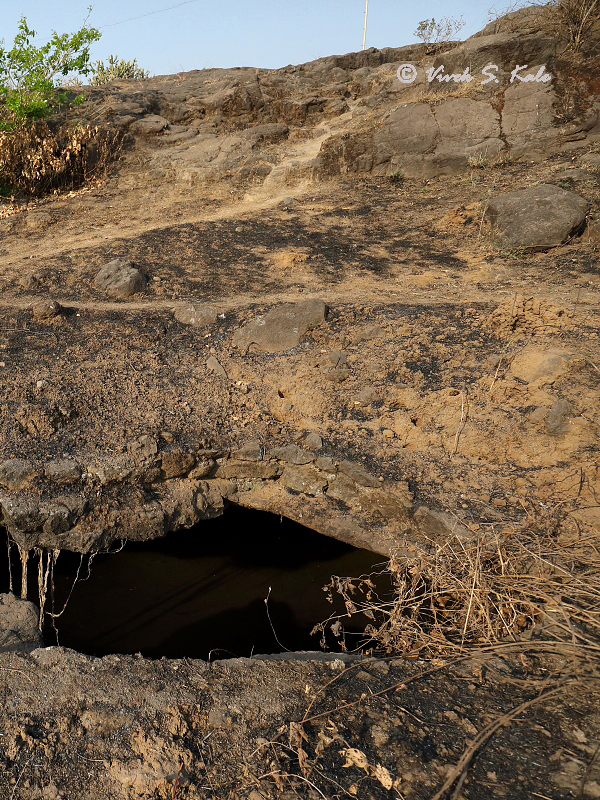 |
| |
| 33. Waksai-Devhar water cistern (east), Maval Tehsil, Pune district, Maharashtra, India |
| |
|
|
वाकसई पाण्याचे टाके (पुर्व ) : देवघर गावाच्या पूर्व दक्षिण बाजूस दोन पाण्याची टाकी आहेत. वाकसई पाण्याचे टाके (पुर्व ) जमिनीखाली कातळात कोरलेले आहे. यातील पूर्वेकडचे टाके पश्चिमेकडच्या टाक्या पेक्षा वेगळी आहे. या टाक्याला आधारासाठी खांब नाहीत. याचा आकार बेढब असून चौकोनी नाही. टाक्याचे मुख मोठे आहे. आत जाण्यासाठी मार्ग नाही.
टाकव्याप्रमाणे इथे शिलालेख नाही. टाक्याचा आकार अंदाजे ६ मीटर बाय ३.५ मीटर असून उंची अंदाजे २ ते २.२ मीटर आहे. टाक्यात भरपूर गाळ आहे. या गाळात जुनी मातीची खापर आढळतात. टाक्याच्या मागच्या बाजूला असलेल्या टेकाडावर महादेवाचे मंदिर आहे. या टेकडीचा बराच भाग (टाक्याच्या जवळ पर्यंत ) दगडी खाण करण्यासाठी पोखरलेला आहे. आजूबाजूला जमिनी ची विक्री चालु आहे. लोणावळ्यापासून सुरु झालेले शहरीकरणाचे खुळ इथपर्यंत पोहोचले आहे. हे टाके महामार्गापासून १०० मीटर अंतरावर आहे. शहरीकरणात हे टाके लुप्त होणायची शक्याता आहे. याचे संवर्धन होणे महत्वाचे आहे. अन्यथा प्राचीन व्यापारी मार्गावरची एक महत्वाची वास्तू हरपण्याची शक्यता आहे.
|
|
Description of Water cistern (East) : On the south east of the village Devghar there is a underground rock cut water cistern without pillars. The underground rock cut cistern has a large irregular rectangular opening. Refer sketch. There are no traces of inscription here There are no support pillars. There is a stone quarry work of modern times, immediately close to the cistern. This tank is at about 20 meter distance from the other water cistern nearby. The tank plan is irregular and is about 6 meter by 3.5 meter in plan area and is about 2 to 2.2 meter in depth. The total capacity of this water cistern is about xxx liters. The close proximity of this water cistern to the ancient trade route indicates that this other than few cisterns on the ancient trade route needs conservation and protection, as the region goes through the urban development.
|
|
|
| |
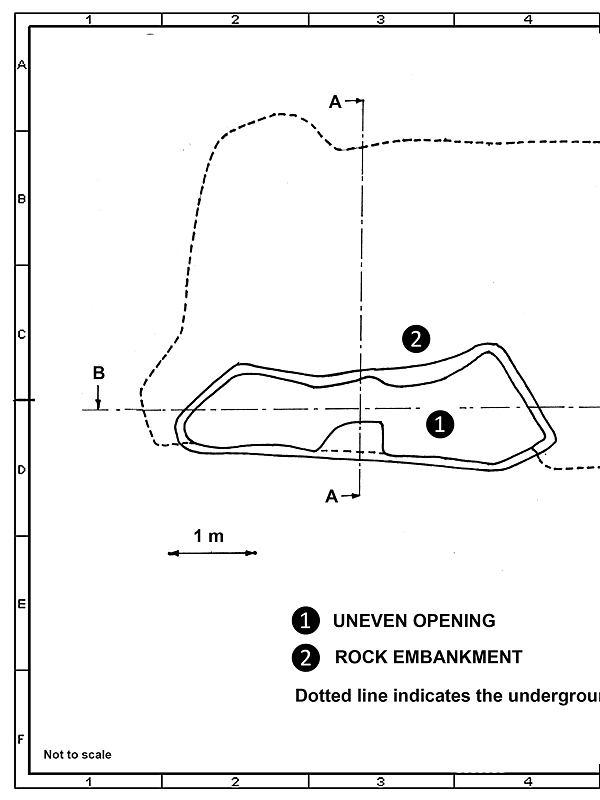 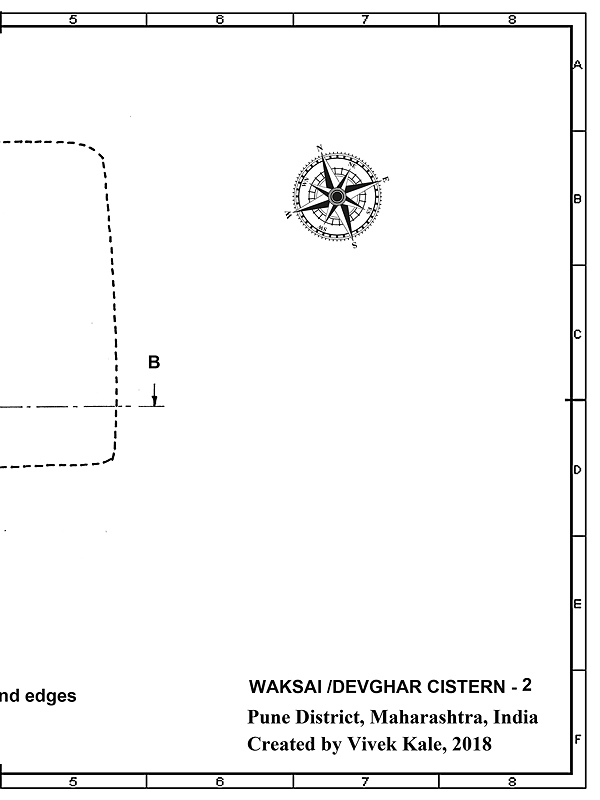 |
| |
| 34. Waksai-Devhar water cistern (east), Maval Tehsil, Pune district, Maharashtra, India |
| |
|
|
| |
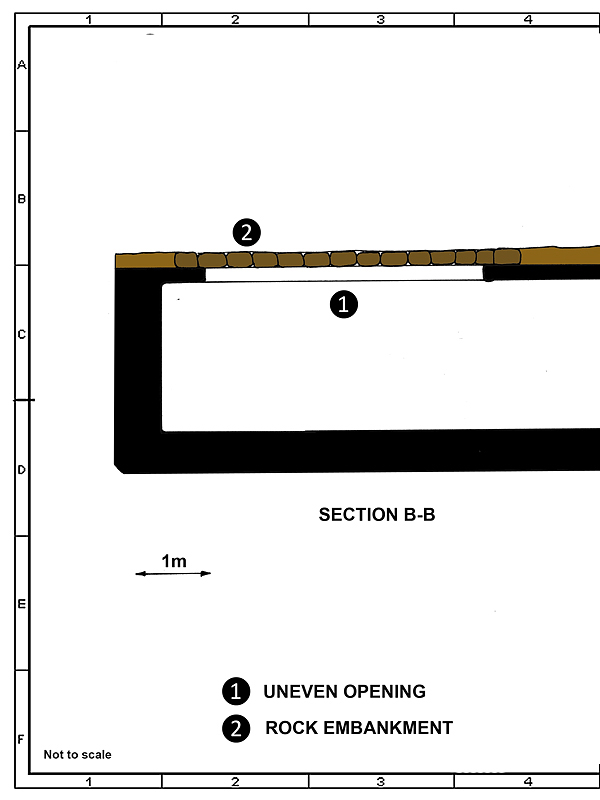 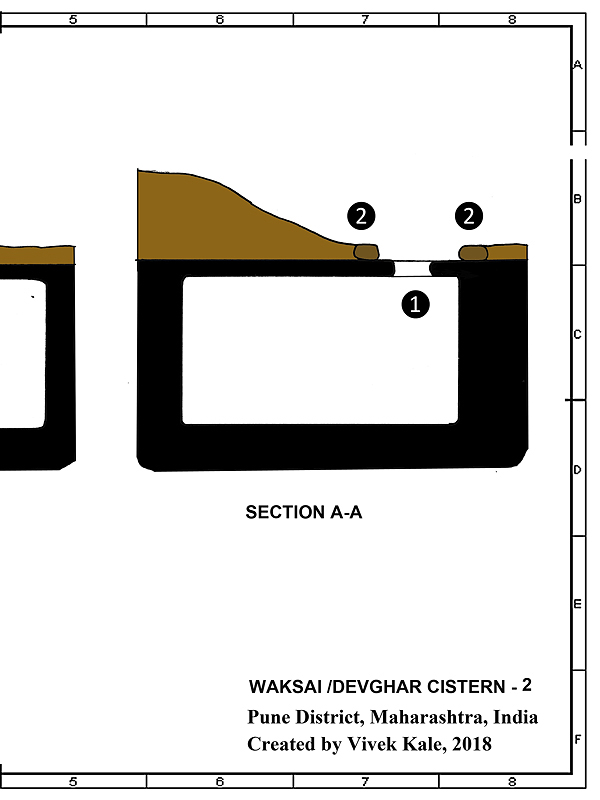 |
| |
| 35. Waksai-Devhar water cistern(east), Maval Tehsil, Pune district, Maharashtra, India |
| |
|
|
| |
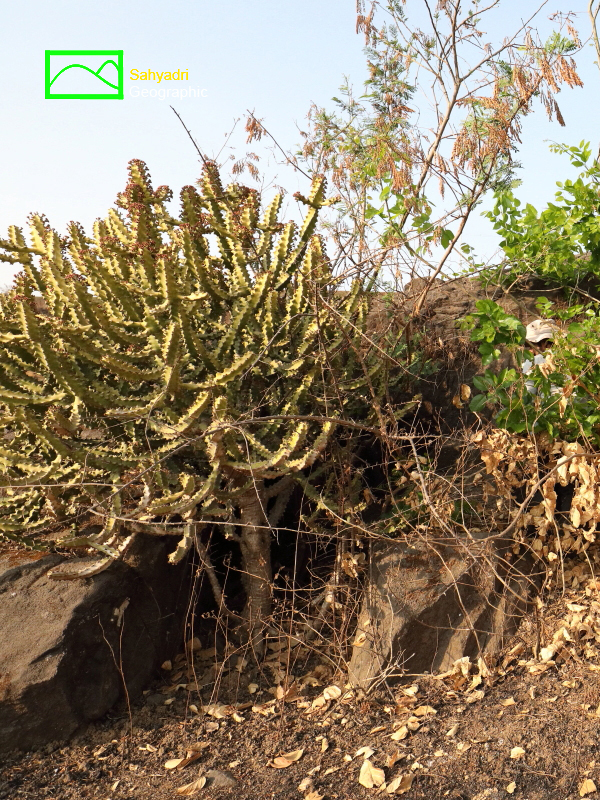 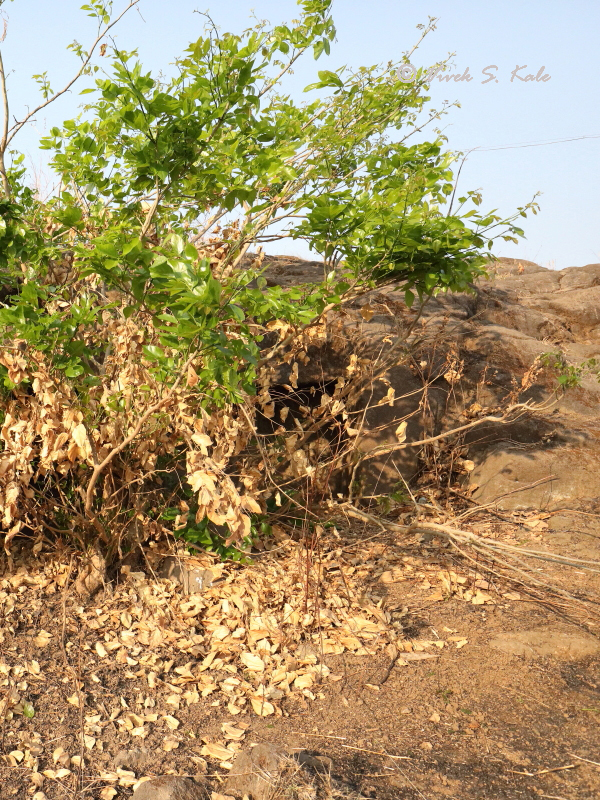 |
| |
| 36. Waksai-Devhar rock cut wall/cave, Maval Tehsil, Pune district, Maharashtra, India |
| |
|
|
देवघर गावाच्या पुर्वेकडे असलेल्या पाण्याच्या टाक्यांजवळ एक अर्धवट कोरलेले लेणे आहे. खोदकाम सुरु करून ते अर्धवट सोडलेले आहे. कदाचित येथे लेणे किंवा पाण्याचे टाके बनवण्याचे प्रयोजन असावे असे दिसते. दगडाच्या भिंतीत तीन चौकोनी कप्पे खोदलेले माहीत. येथे जमिनीखाली काय आहे हे मात्र समाजात नाही. येथे आता झाडी उगवलेली आहे. मागच्या बाजूला दगडाची खाण आहे. या कोरीव अर्धवट कामापर्यंत खाण येऊन ठेपली आहे.
|
|
Description of Rock cut surface: On the n of the village Devghar there is a rock cut structure, north of water cistern (east). Refer sketch. The wall is cut with three rectangular undercuts. By the shape of the cutting it looks like that there was a plan to make either a small cave or water cistern here. The work is incomplete. The close proximity of this rock cut structure to the ancient trade route indicates that this other than few cisterns on the ancient trade route needs conservation and protection, as the region goes through the urban development.
|
|
|
| |
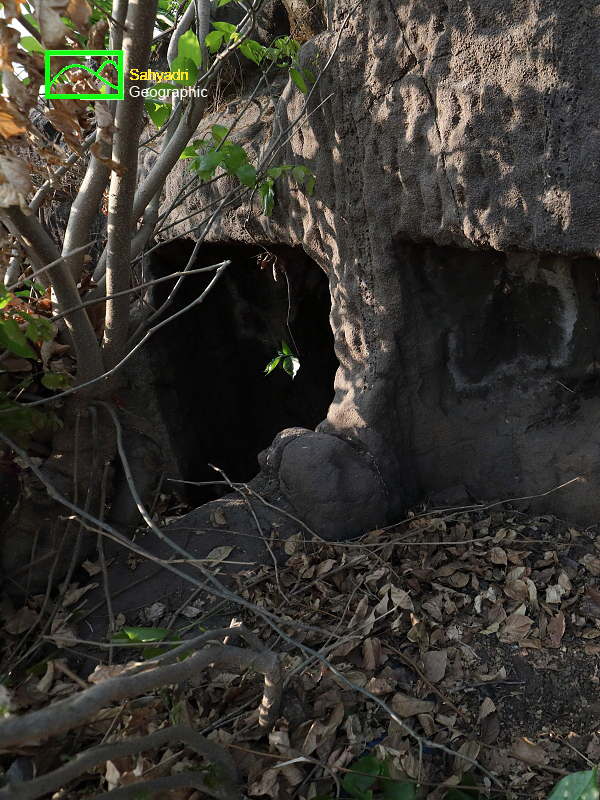  |
| |
| 37. Waksai-Devhar rock cut wall/cave,, Maval Tehsil, Pune district, Maharashtra, India |
| |
|
|
| |
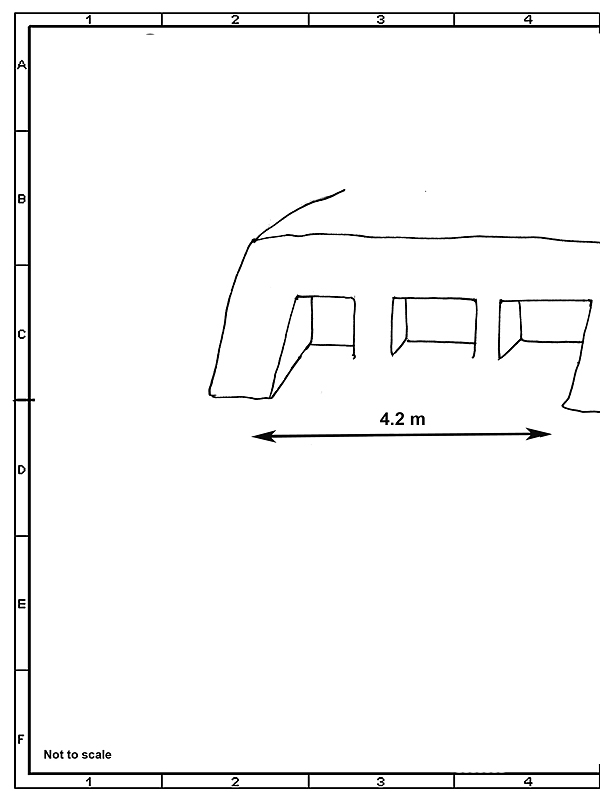 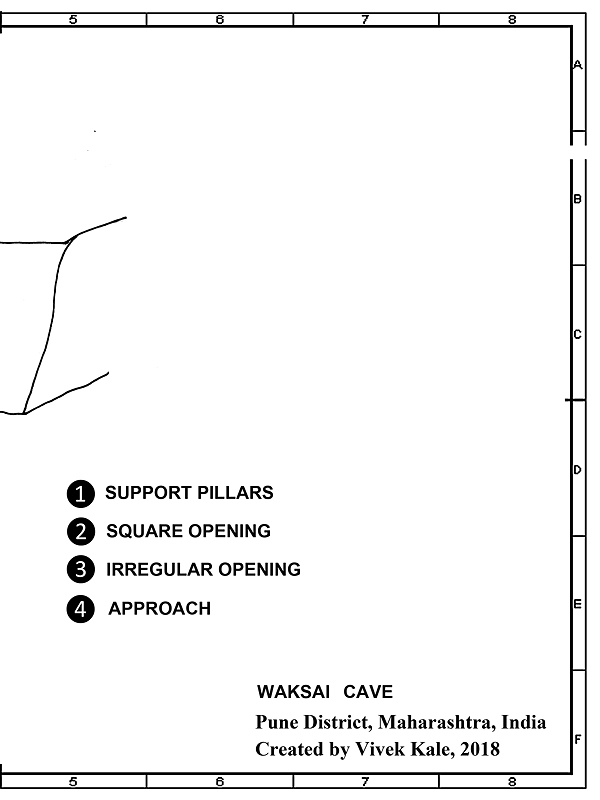 |
| |
| 38. Waksai-Devhar rock cut wall/cave,, Maval Tehsil, Pune district, Maharashtra, India |
| |
|
|
| |
 |
| |
|
|
References :
1. Cave temples of India, London, 1880, Fergusson James and Burgess James.
2. Gazetters of Bombay Presidency, Poona District, Volume XVIII, 1885.
3. Buddhist architecture of western India, 1981, S. Nagraju.
4. Myth and Reality, Studies in the Formation of Indian Culture
by D. D. Kosambi
5. History and Society, Problems of Interpretation, by D. D. Kosambi
|
| |
|
|
| |
|















































































